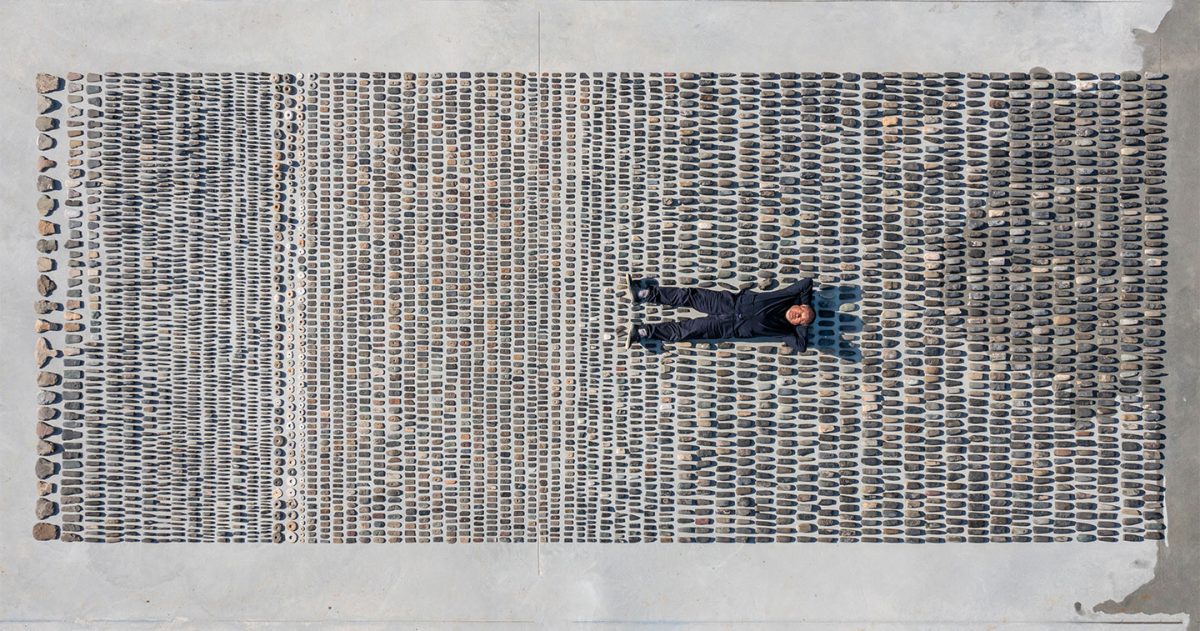LONDON, UK — Ai Weiwei, one of the world’s most celebrated and recognizable living artists, has unveiled a major new exhibition at the Design Museum. Ai Weiwei: Making Sense is the artist’s very first exhibition to focus on design and architecture, and is his biggest UK show in eight years.
The exhibition features works never shown before in the UK, as well as major new pieces displayed for the very first time. Large-scale works are also installed outside of the exhibition gallery, in the museum’s free-to-enter spaces, as well as outside the building.
Known around the world for his powerful art and activism, Ai Weiwei works across many disciplines: his practice encompasses art, architecture, design, film, collecting, and curating. In this exhibition, Ai uses design and the history of making as a lens through which to consider what we value.
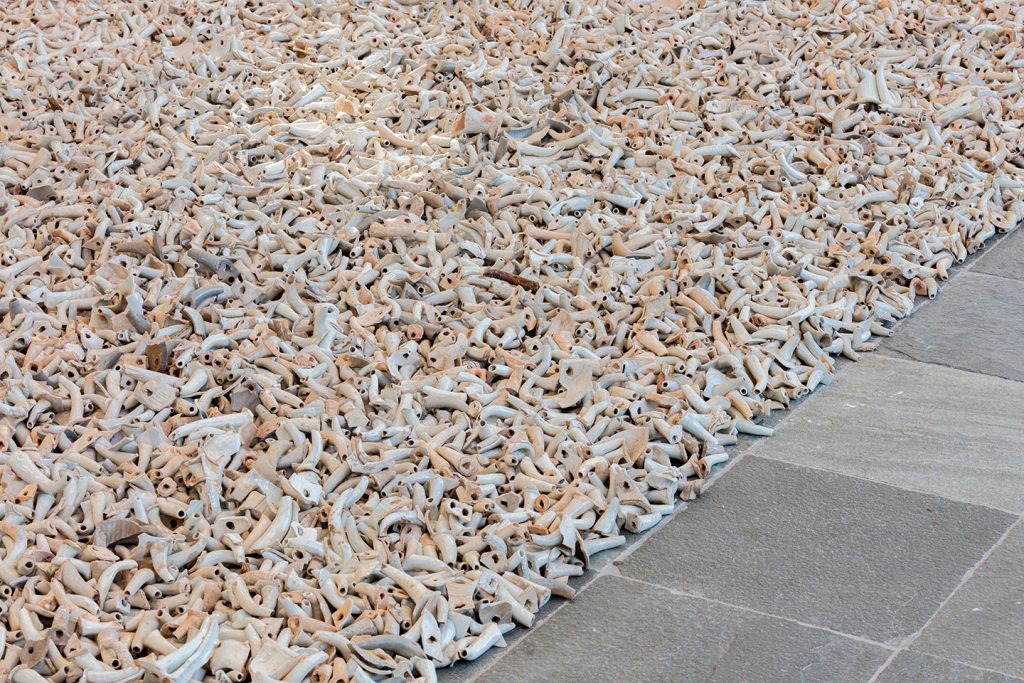
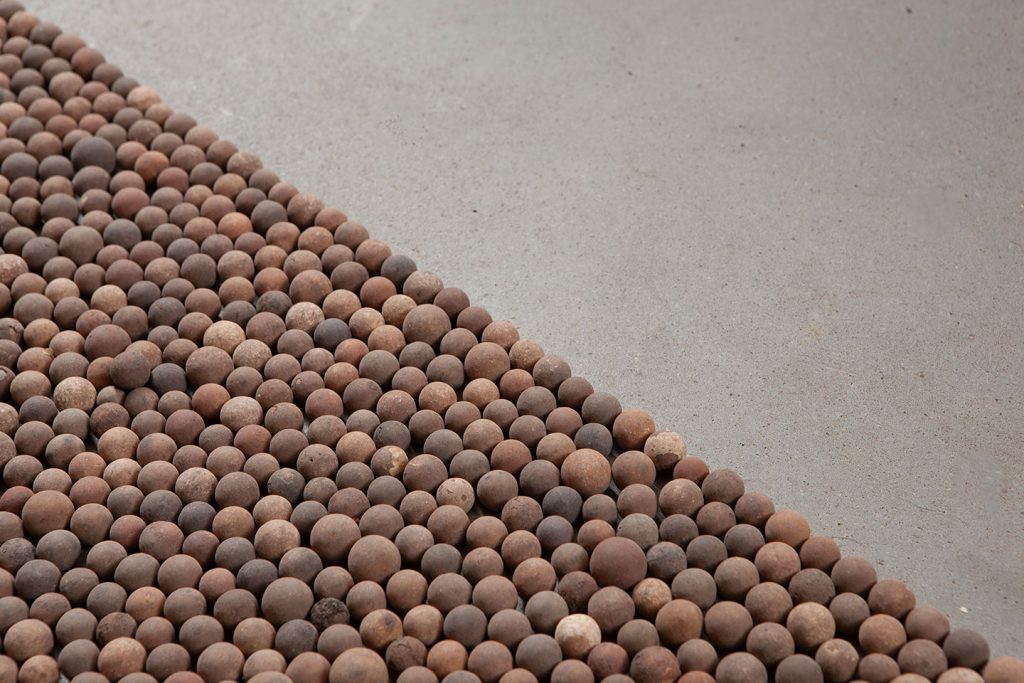
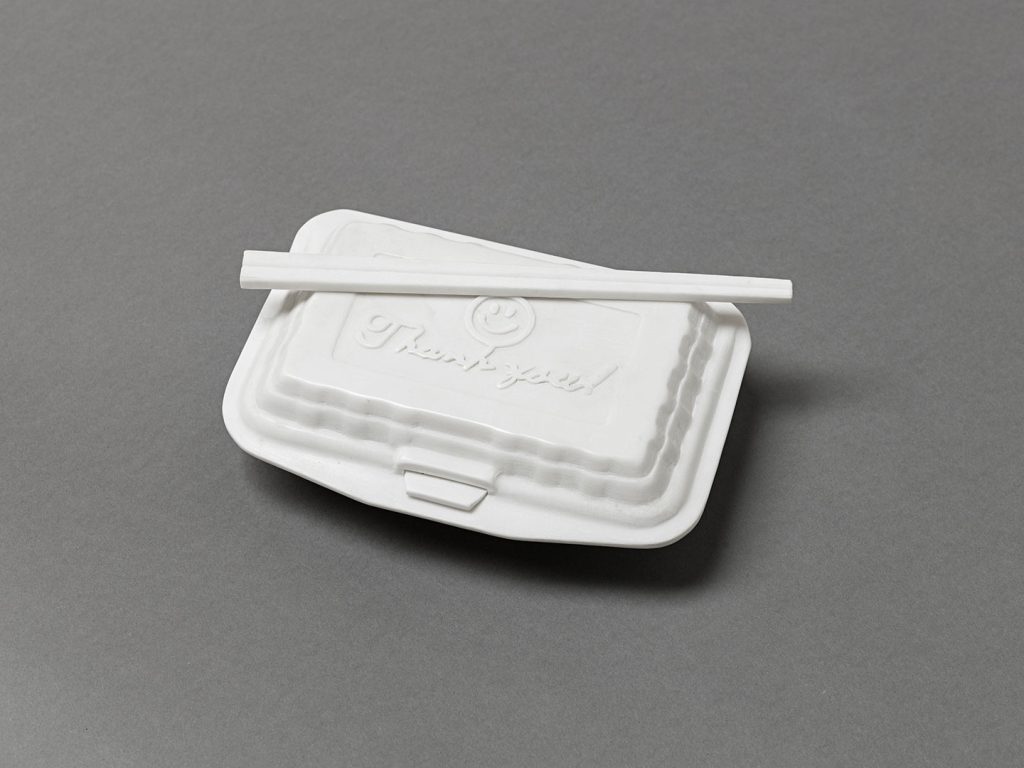
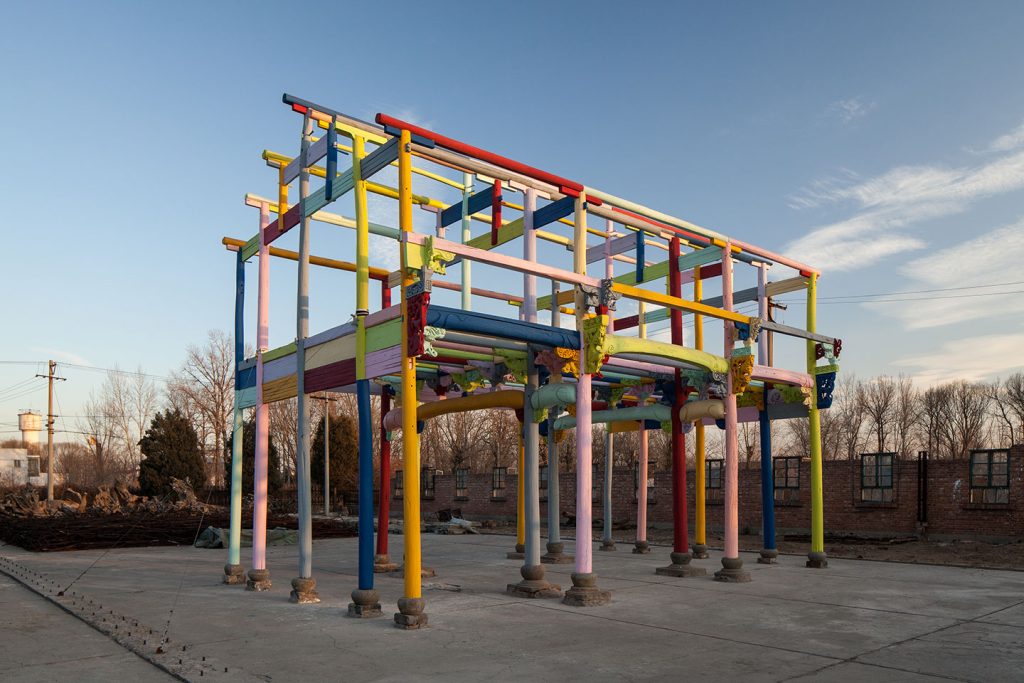
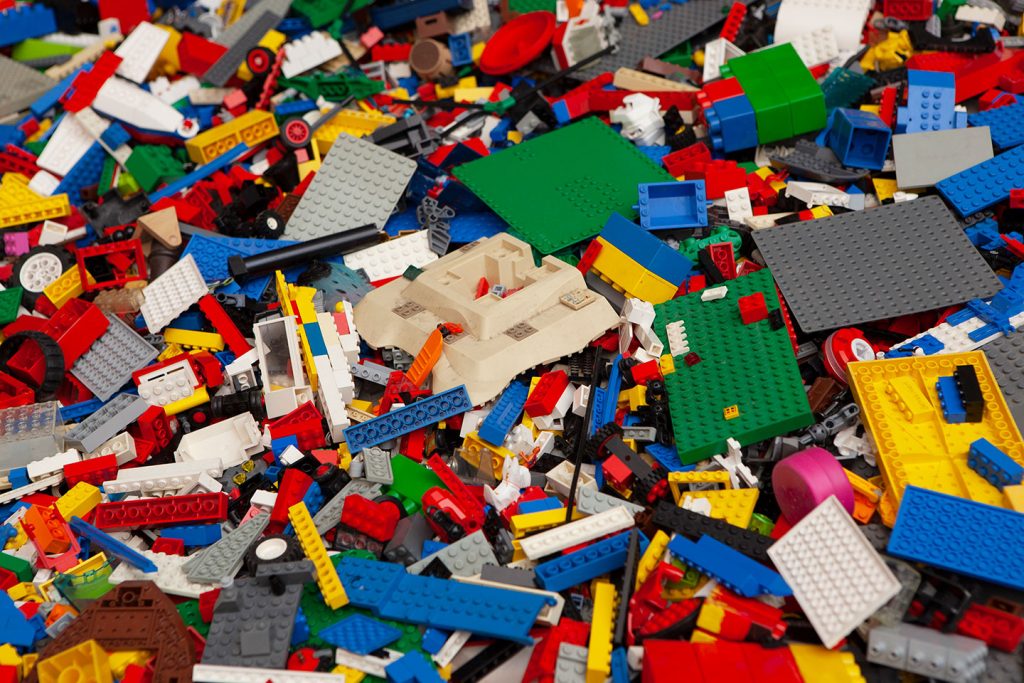
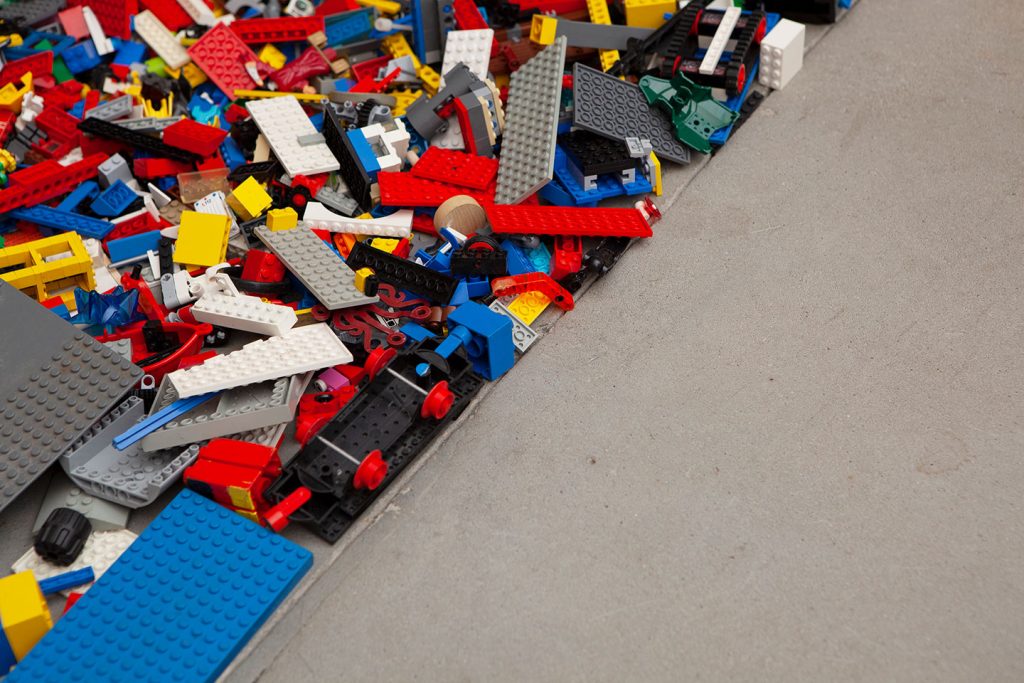
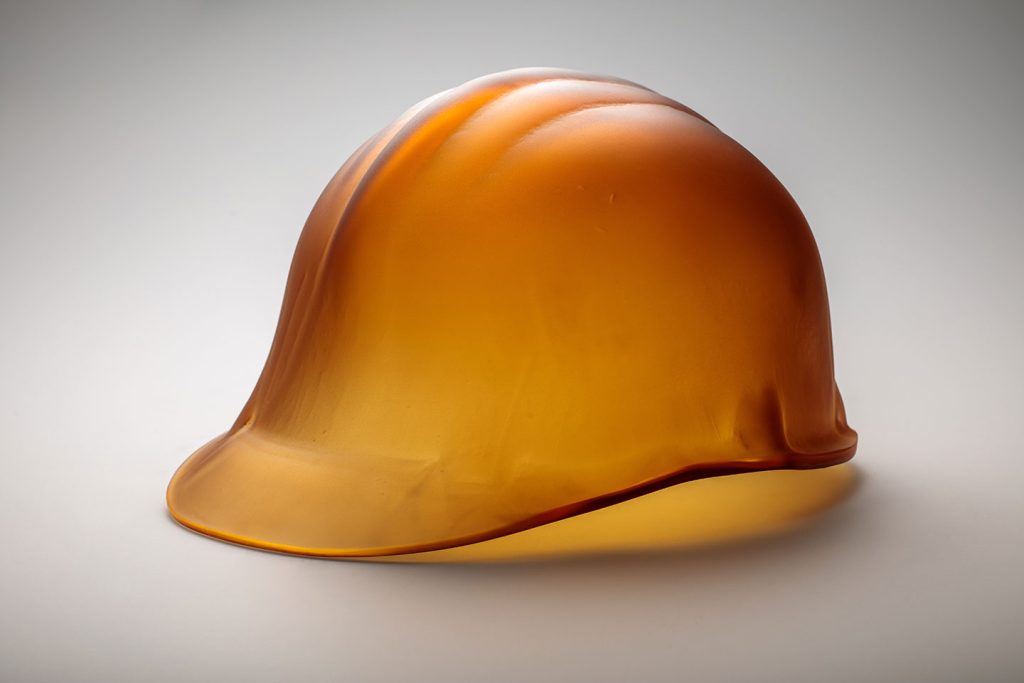
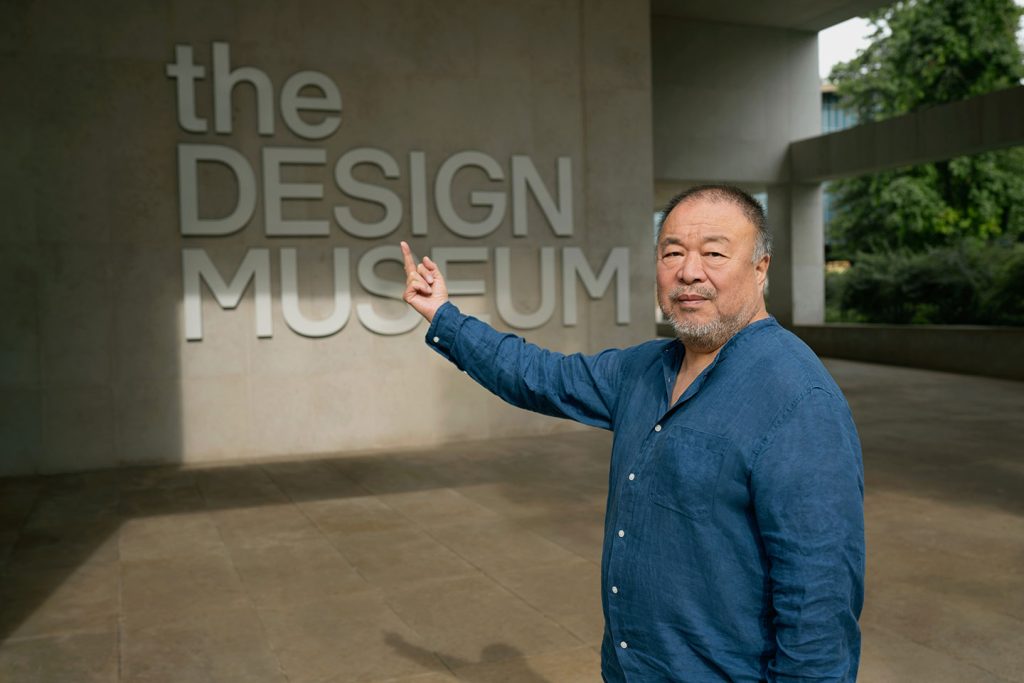
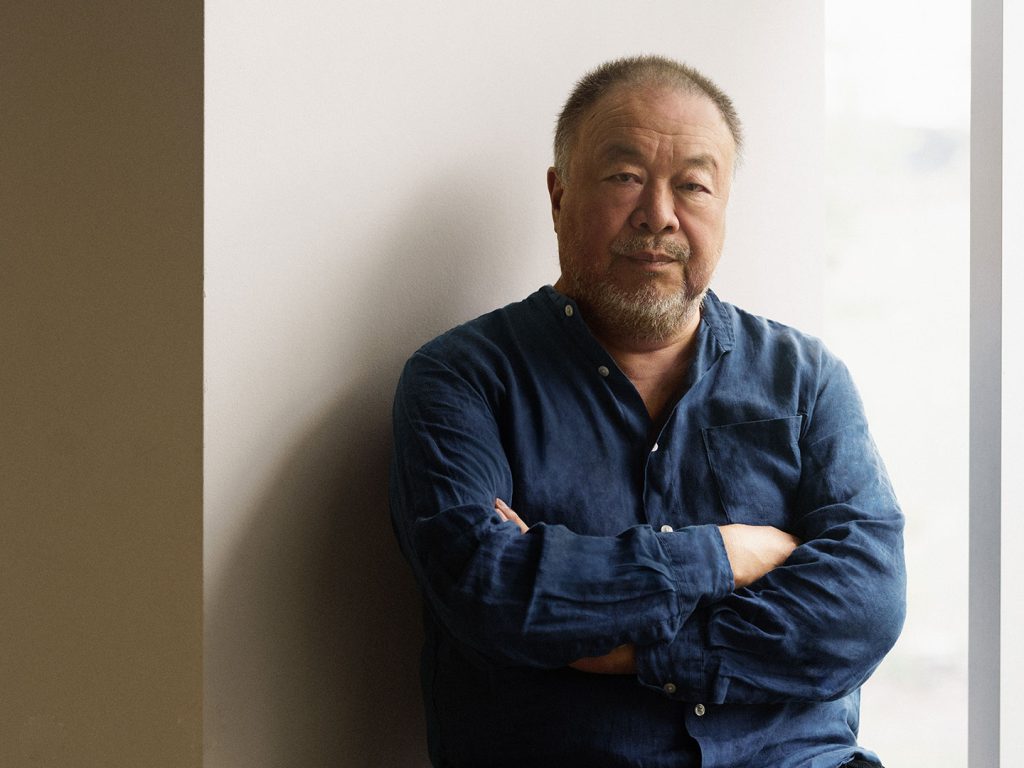
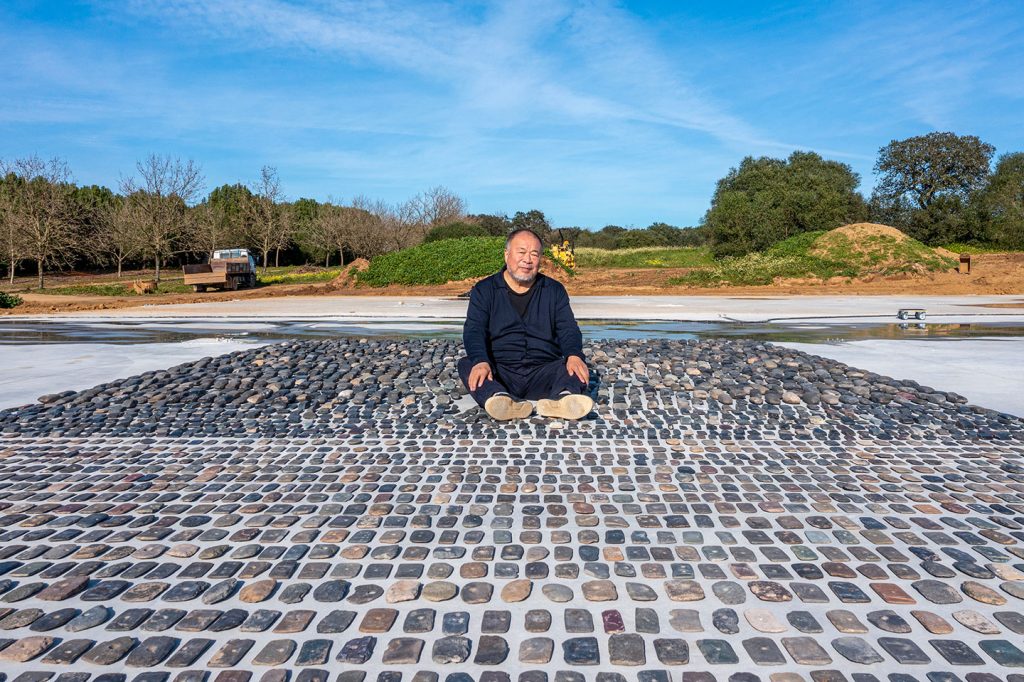
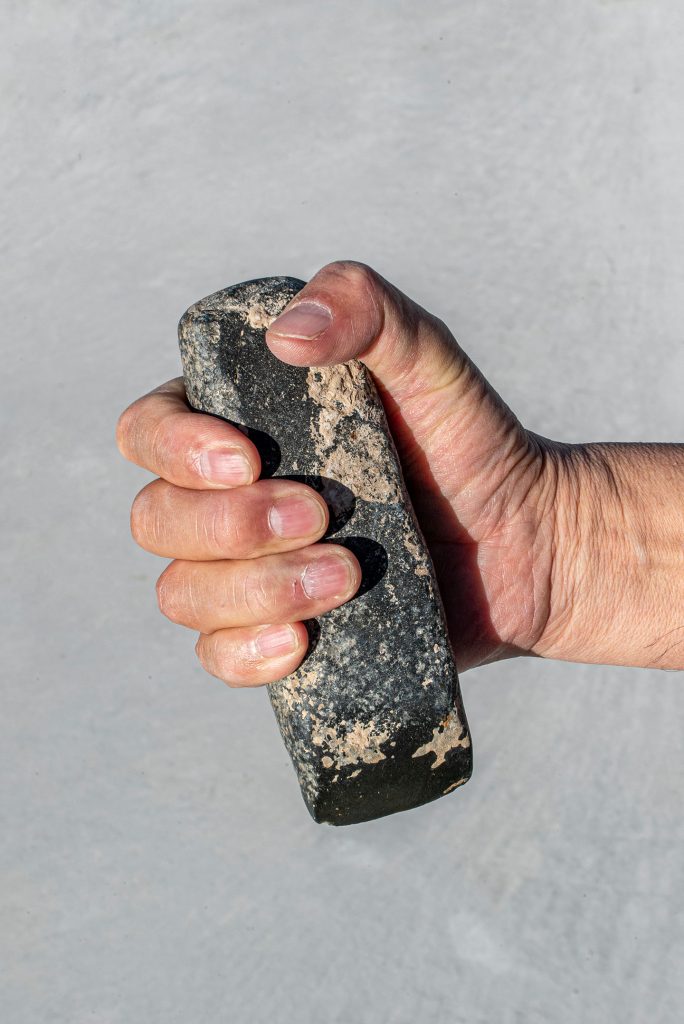
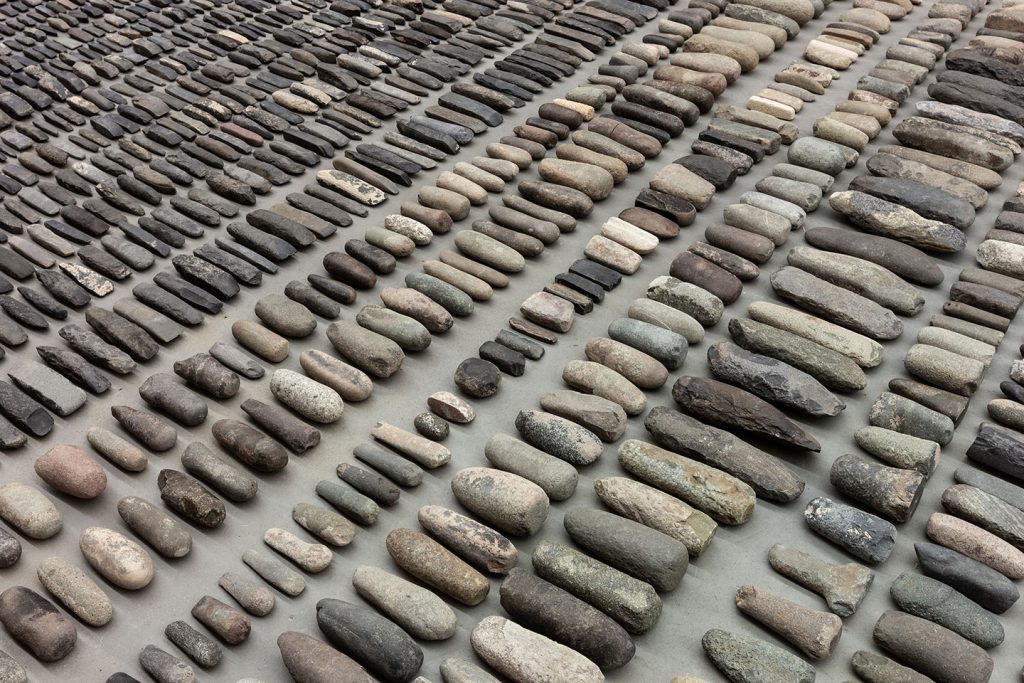
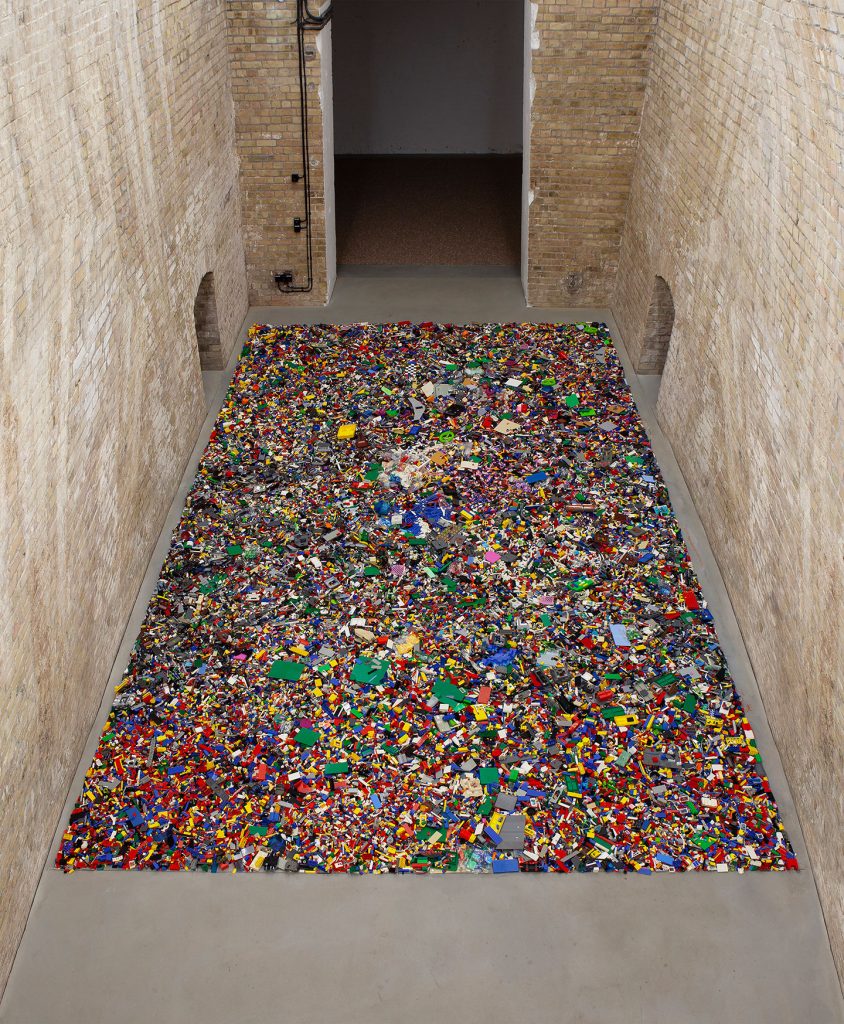
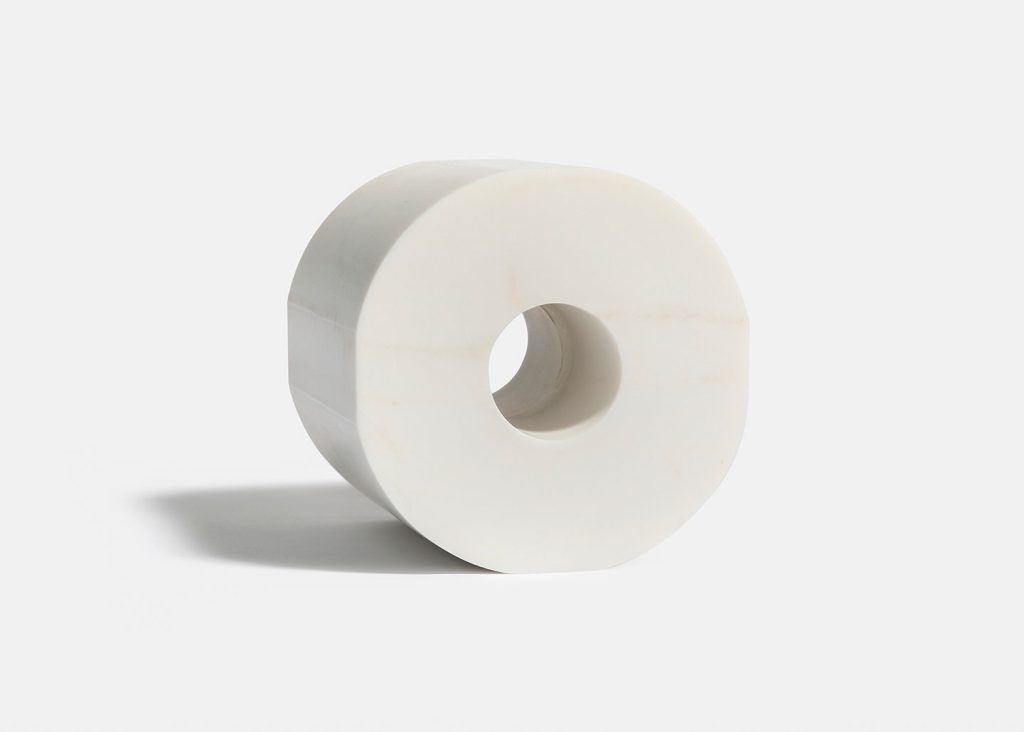
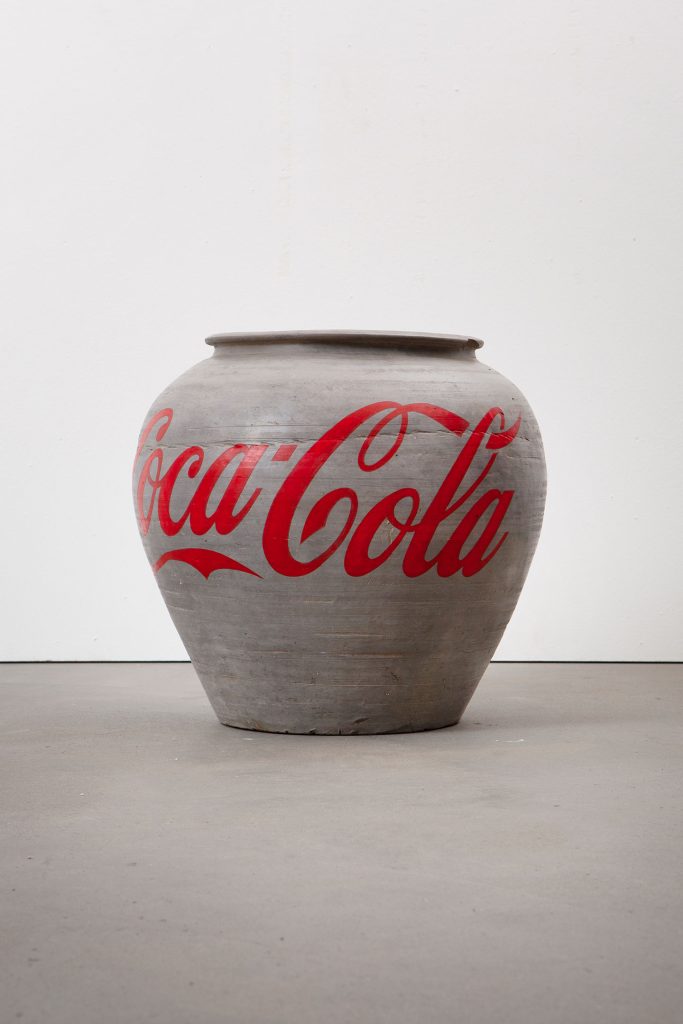
At the heart of the exhibition are a series of major site-specific installations. Hundreds of thousands of objects are laid out on the floor of the gallery in a series of five expansive “fields.” These objects — from Stone Age tools to Lego bricks — have been collected together by Ai Weiwei since the 1990s, and are the result of his ongoing fascination with artifacts and traditional craftsmanship. These collection-based works have never been brought together before. Three of the fields have been created for this exhibition and are seen for the very first time. The other two have never been on show in the UK before.
The five field works are:
- Still Life. 4,000 tools dating from the late Stone Age are laid side-by-side as a reminder that the origins of design are rooted in survival. These axe-heads, chisels, knives and spinning wheels are presented as a terrain of forgotten know-how.
- Left Right Studio Material. This consists of thousands of fragments of the remains of Ai’s porcelain sculptures that were destroyed when his ‘Left Right’ studio in Beijing was demolished by the Chinese state in 2018. The remains are a form of evidence of the repression that Ai has suffered at the hands of the Chinese government, as well as a testament to his ability to turn destruction into art. This field is being displayed for the first time.
- Spouts. This field features more than 250,000 porcelain spouts from teapots and wine ewers crafted by hand during the Song dynasty (960 – 1279 CE). If a pot was not perfect when it was made, the spout was broken off. The quantity bears witness to the scale of porcelain production in China a thousand years ago.
- Untitled (Porcelain Balls). These cannon balls were made during the Song dynasty (960 – 1279 CE) from Xing ware, a high-quality porcelain. Ai was struck by the fact that this precious and seemingly delicate material was once used as a weapon of war. Around 200,000 are on display, and the artwork has been created especially for this exhibition.
- Untitled (Lego Incident). Like other objects in the fields, Lego is produced on an industrial scale, but it is machine-made as opposed to hand-crafted. Ai started working with this material in 2014, to produce portraits of political prisoners. When Lego briefly stopped selling to him as a result, his response on social media led to overwhelming donations of bricks from the public. These donated bricks are presented for the first time as a fully-formed artwork.
Presented with these vast fields, visitors are invited to make sense of them. They are able to walk among them, encountering thousands of years of human ingenuity.
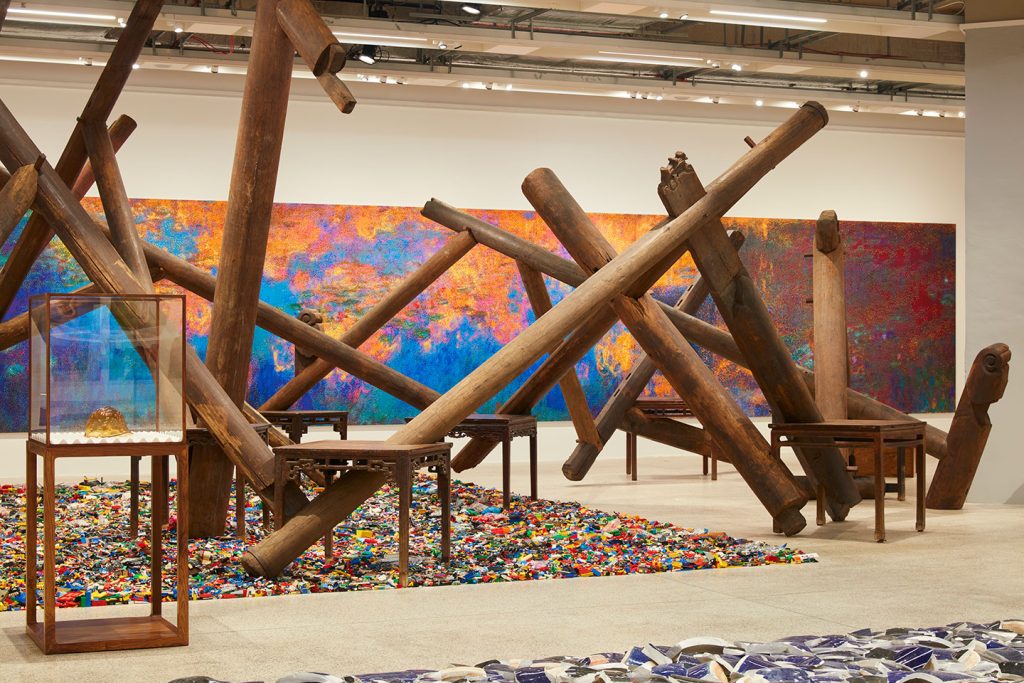
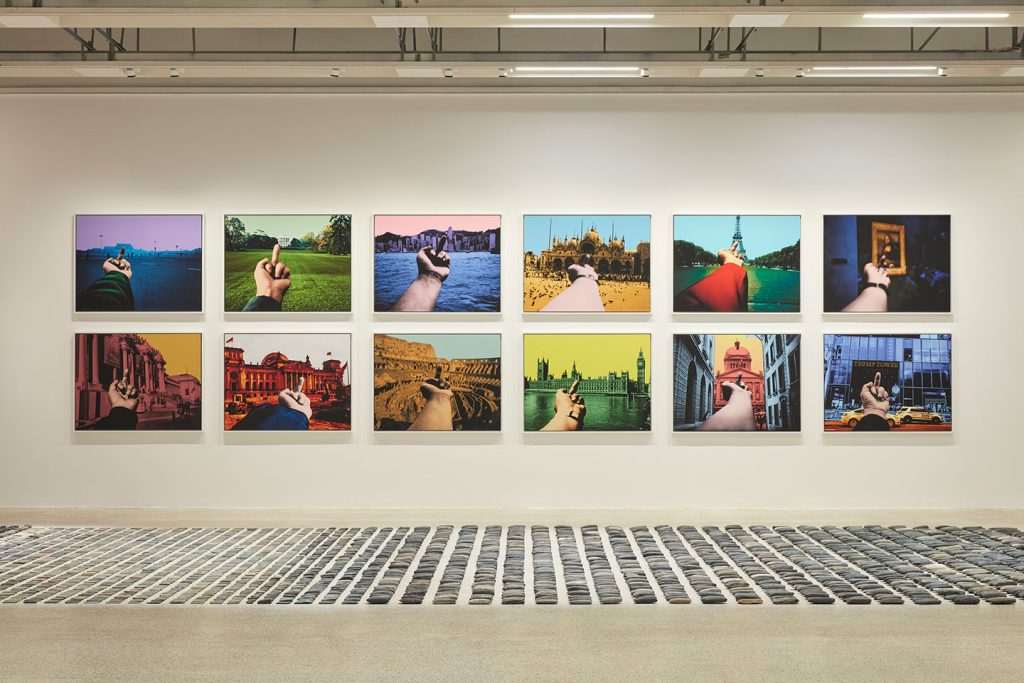
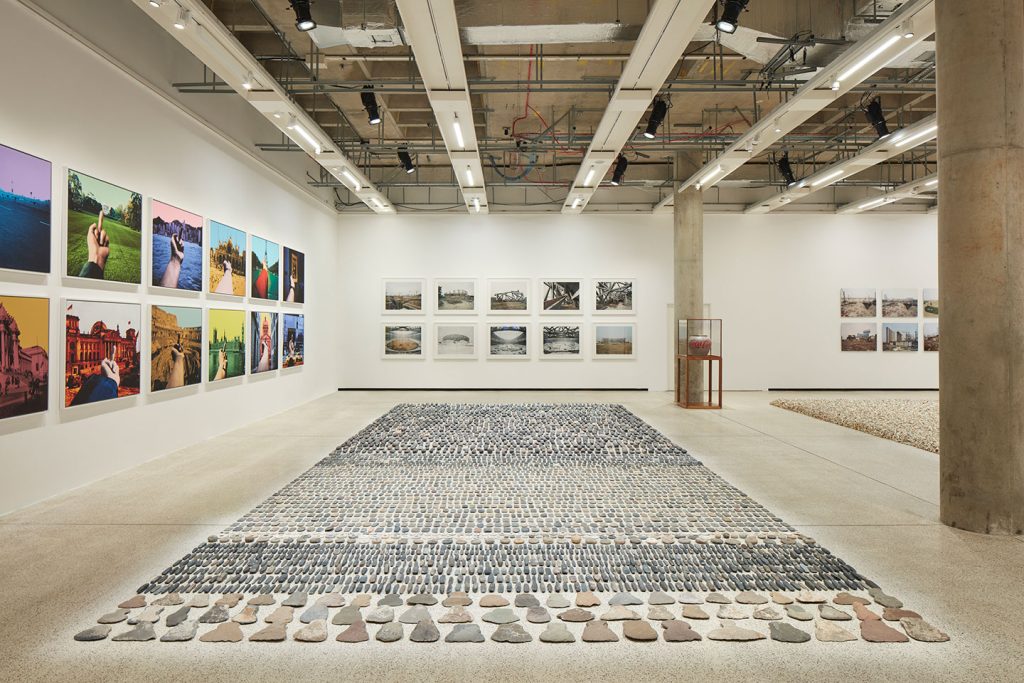
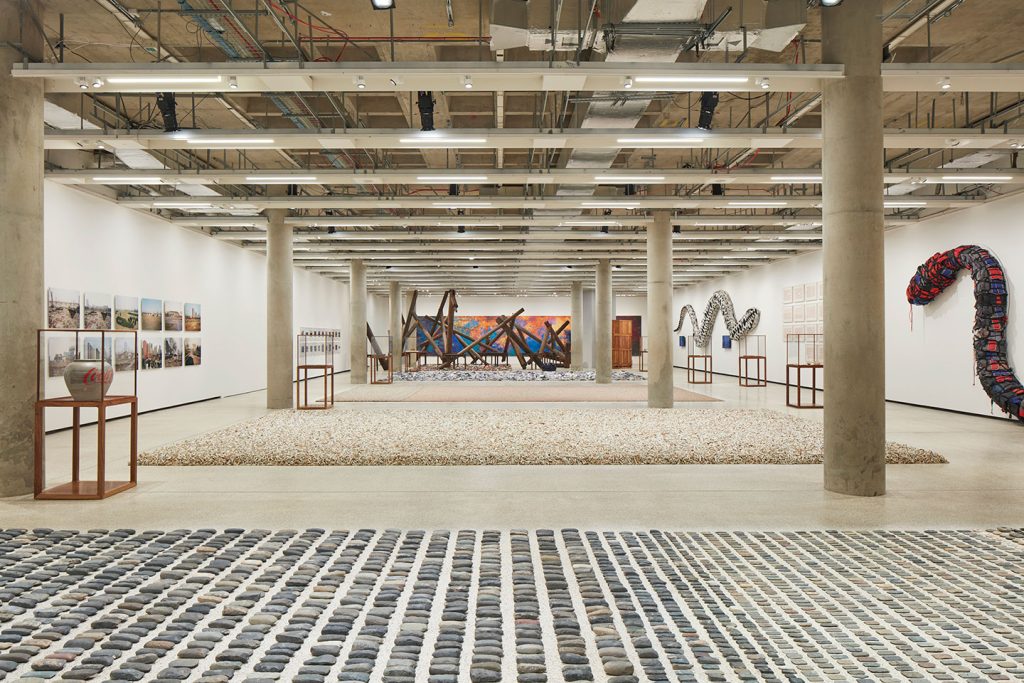
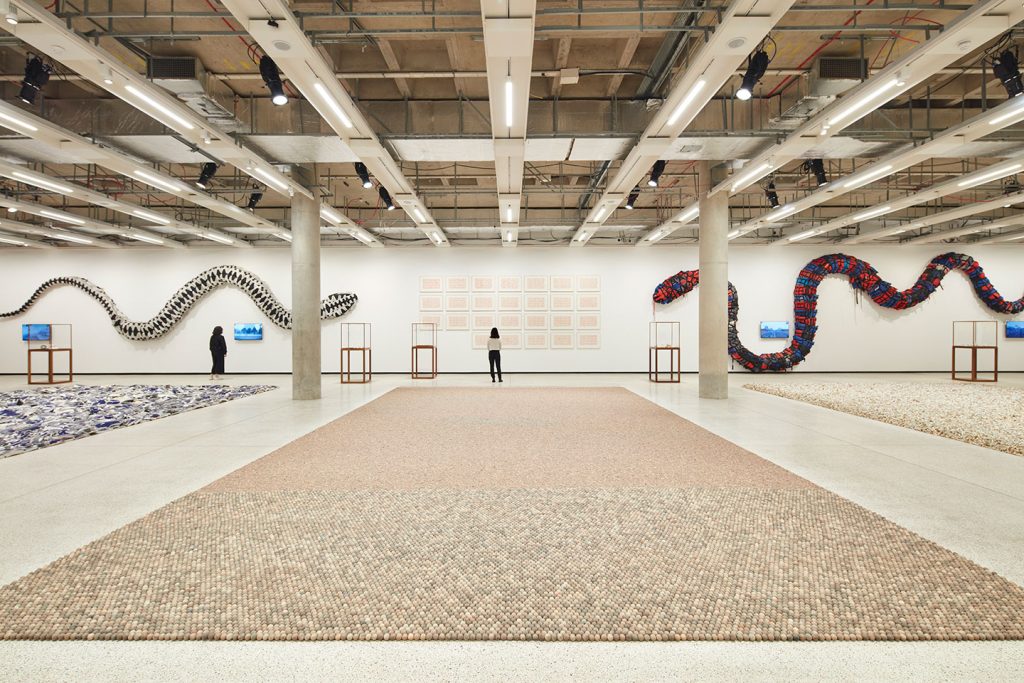
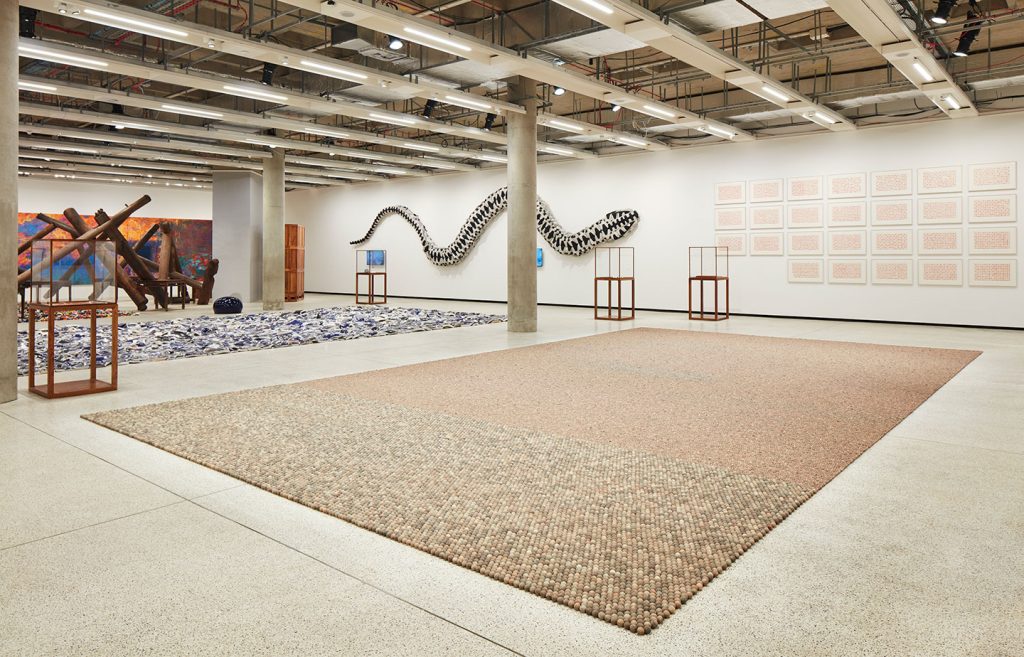
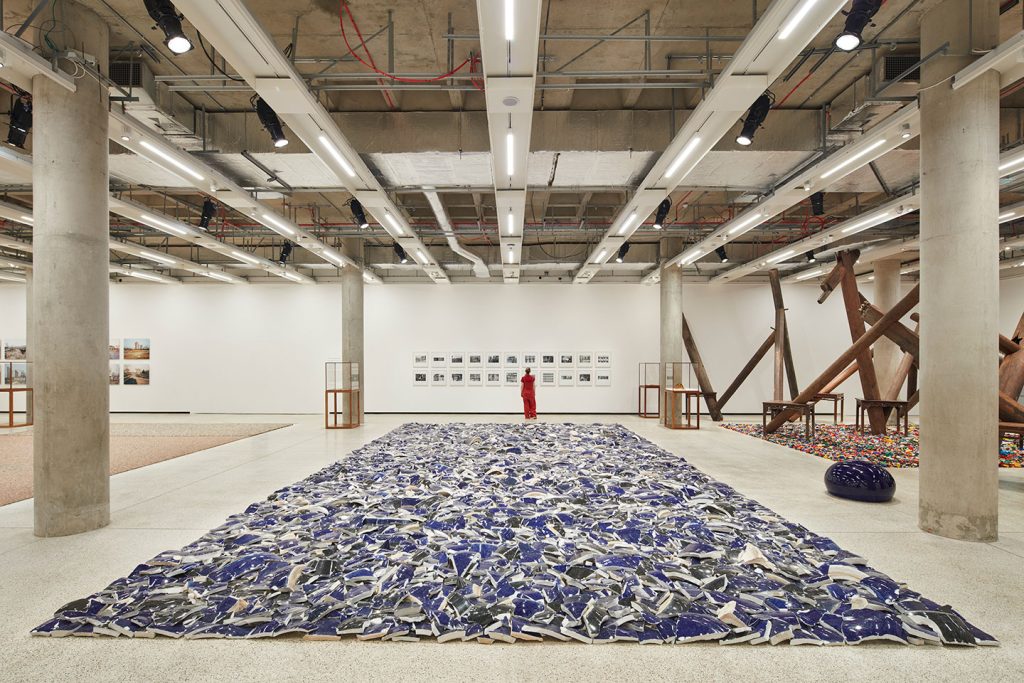
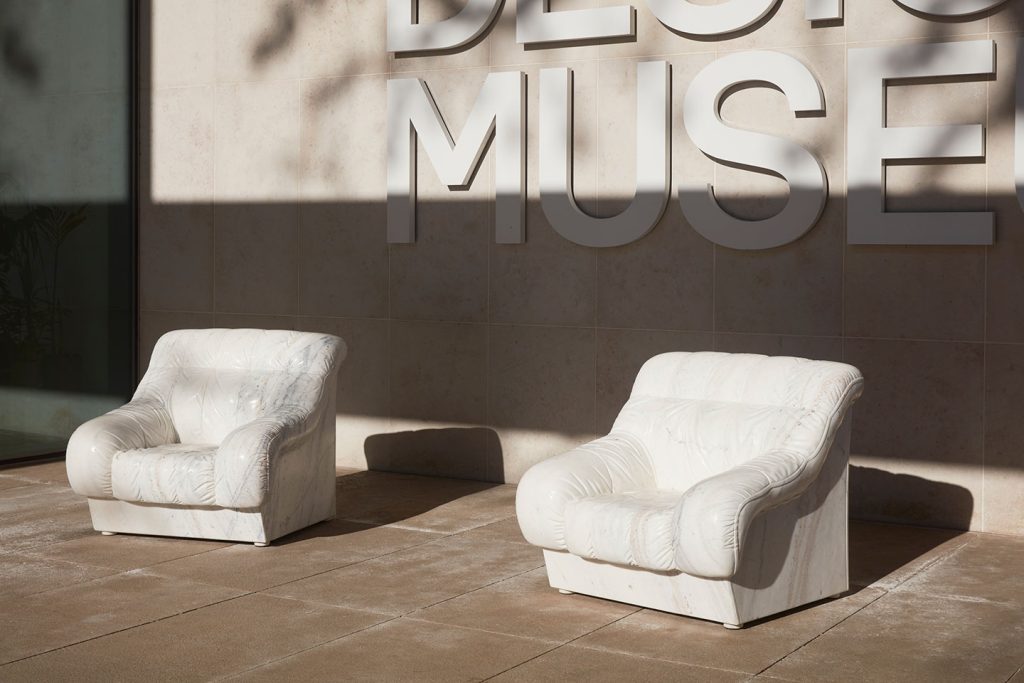
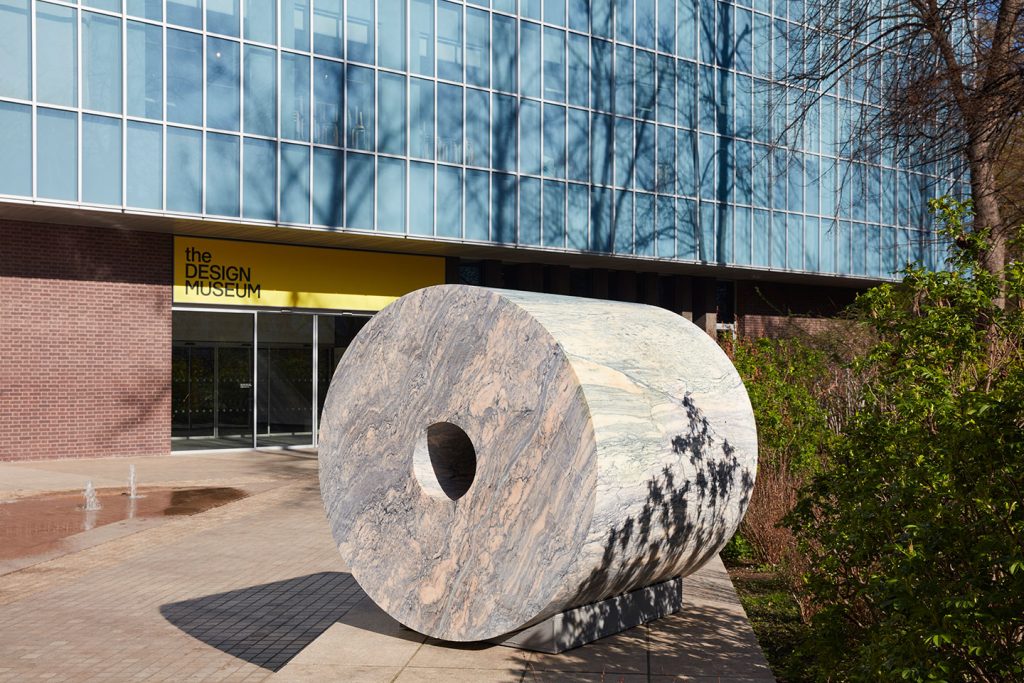
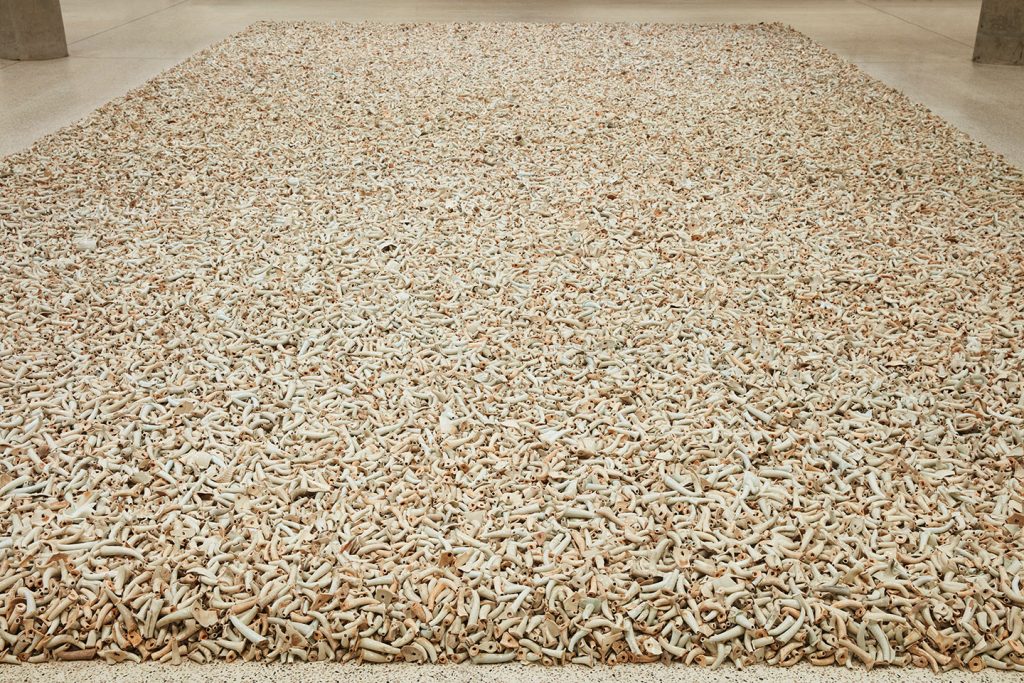
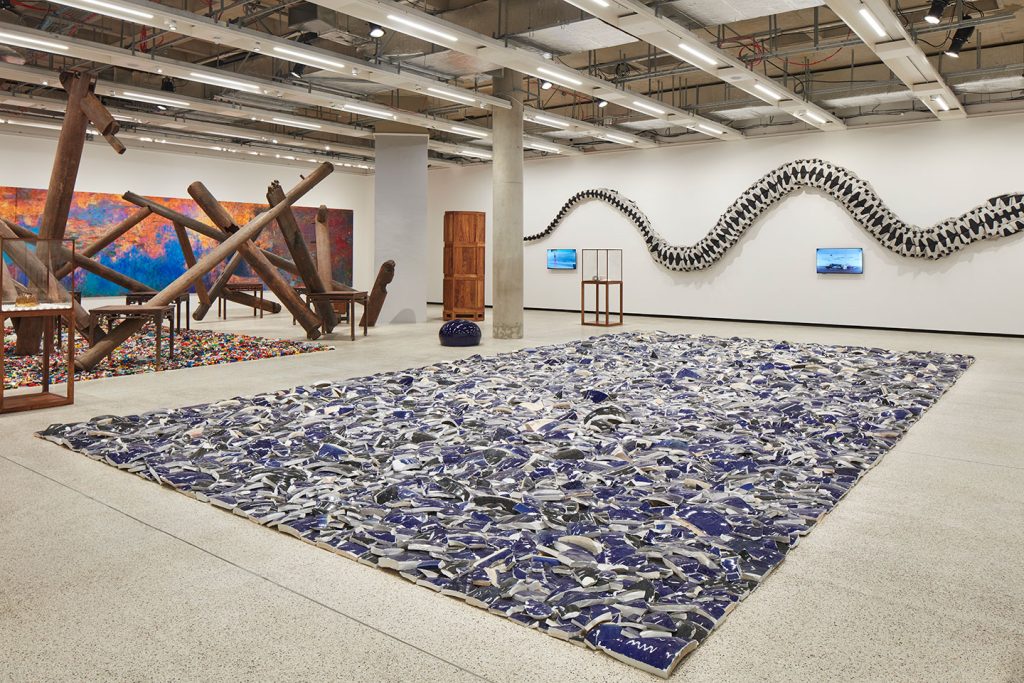
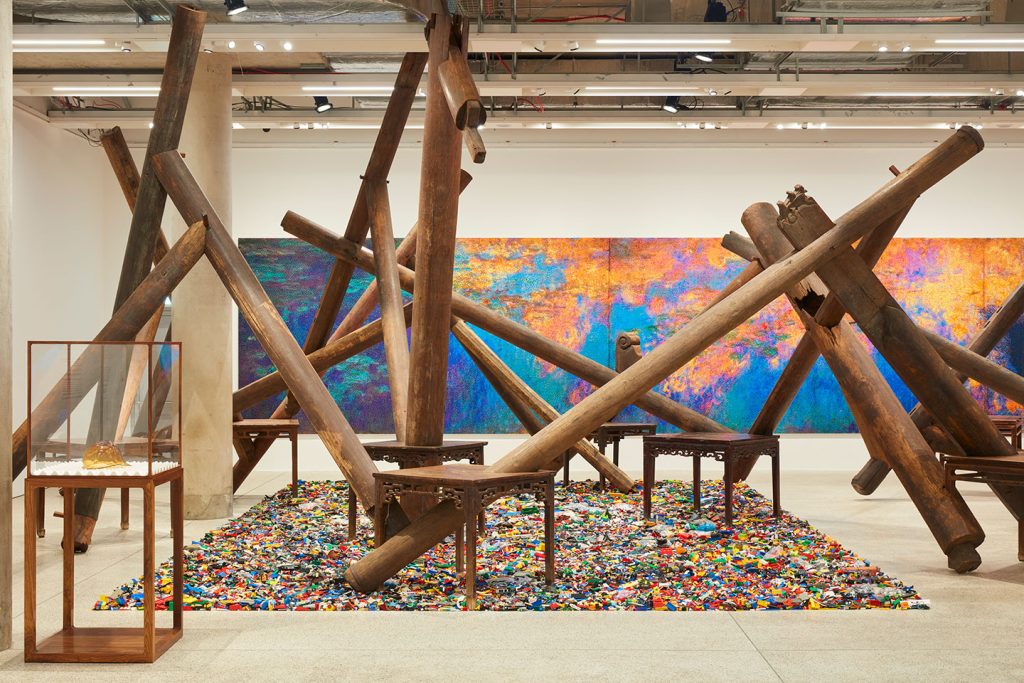
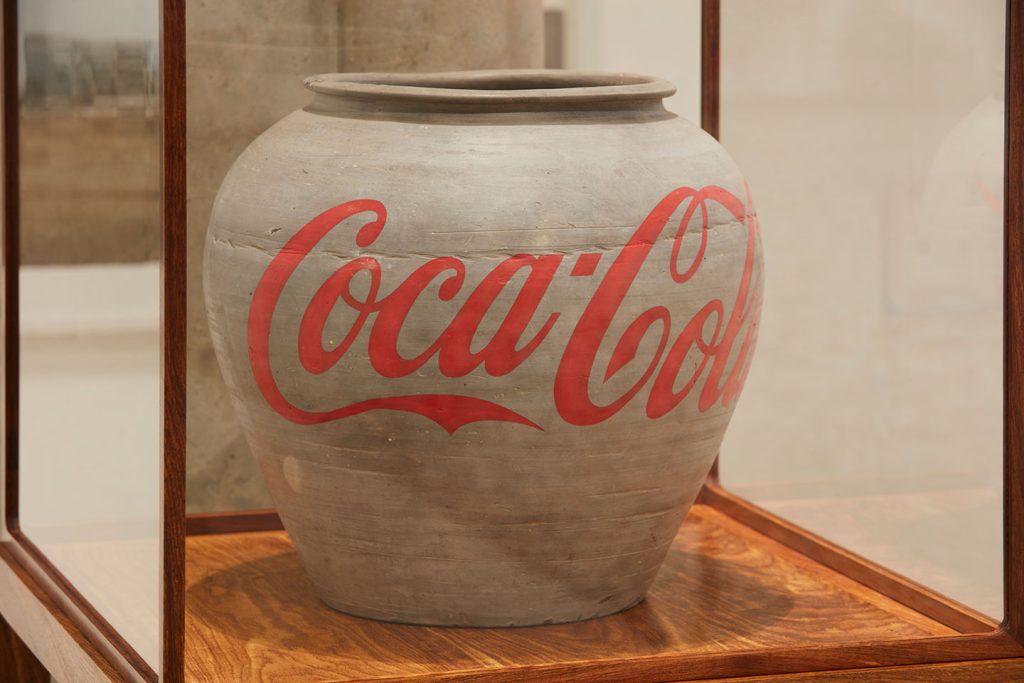
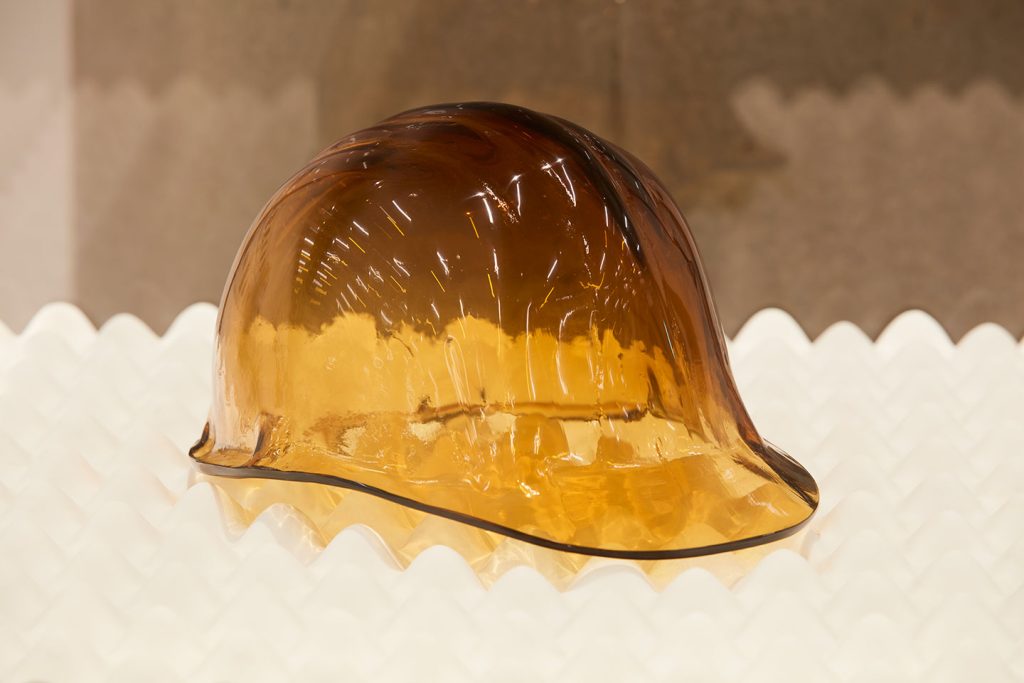
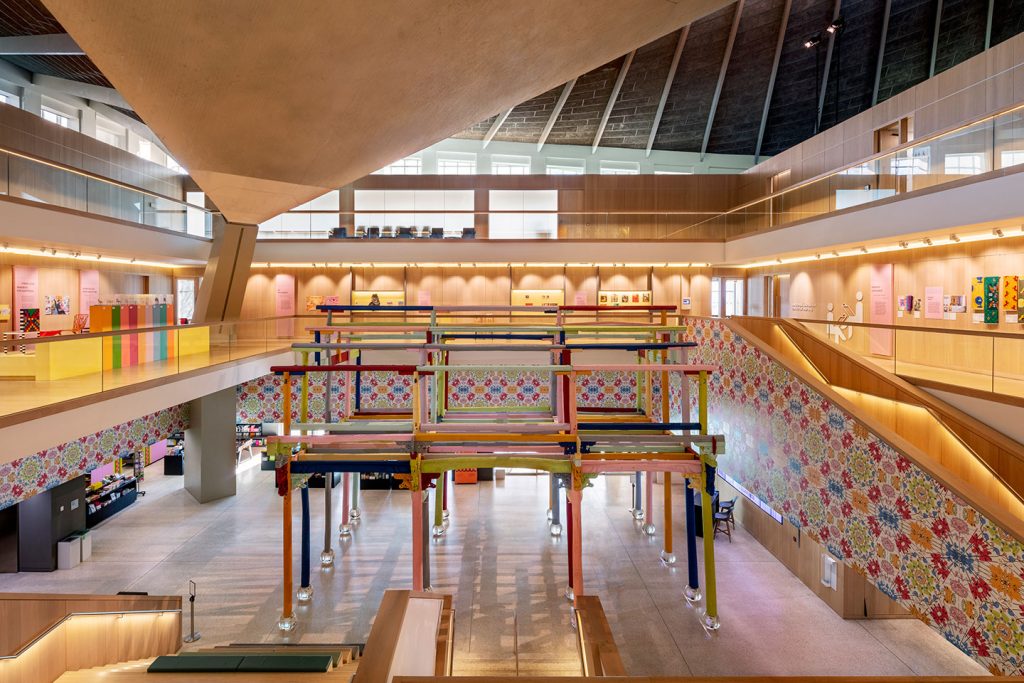
Justin McGuirk, Chief Curator at the Design Museum and curator of Ai Weiwei: Making Sense, said, “Ai Weiwei’s fields are extraordinary, and they tell a story of human ingenuity that spans millennia. The fields are a meditation on value – on histories and skills that have been forgotten, and on the tension between the industrial and the handmade. Their scale is unsettling and moving, and in trying to make sense of these works the visitor is challenged to think about what we value and destroy.”
Alongside the fields are dozens of objects and artworks from throughout Ai Weiwei’s career that explore the tensions between past and present, hand and machine, precious and worthless, construction and destruction. His Han dynasty urn emblazoned with a Coca-Cola logo, which is on show here, epitomizes these clashes.
Revealed for the first time to coincide with the show’s opening are new versions of Ai Weiwei’s famous Study of Perspective series, in which he flips the finger at iconic landmarks. As embodied by culturally and politically significant sites, power is Ai’s target in the longstanding series. He repeatedly performs a scornful gesture, subverting the traditional artistic method for measuring perspective. In doing so, he rejects the expectation that these institutions should be respected or revered. Begun in 1995 as a series of photographs, these have been turned into pigment prints for this show, using what Ai sees as the more graphic language of design. The twelve here are presented for the first time, and feature Ai showing his middle finger to locations such as Tiananmen Square in Beijing, and Trump Tower in New York City.
Another highlight of the exhibition is the largest Lego artwork Ai Weiwei has ever made. Constructed entirely of Lego blocks, the work is a recreation of one the most famous paintings by French Impressionist Claude Monet. Titled Water Lilies #1, the work is over 15m in length and spans the entire length of one of the walls in the Design Museum gallery. It is made from nearly 650,000 studs of Lego bricks, in 22 colors.
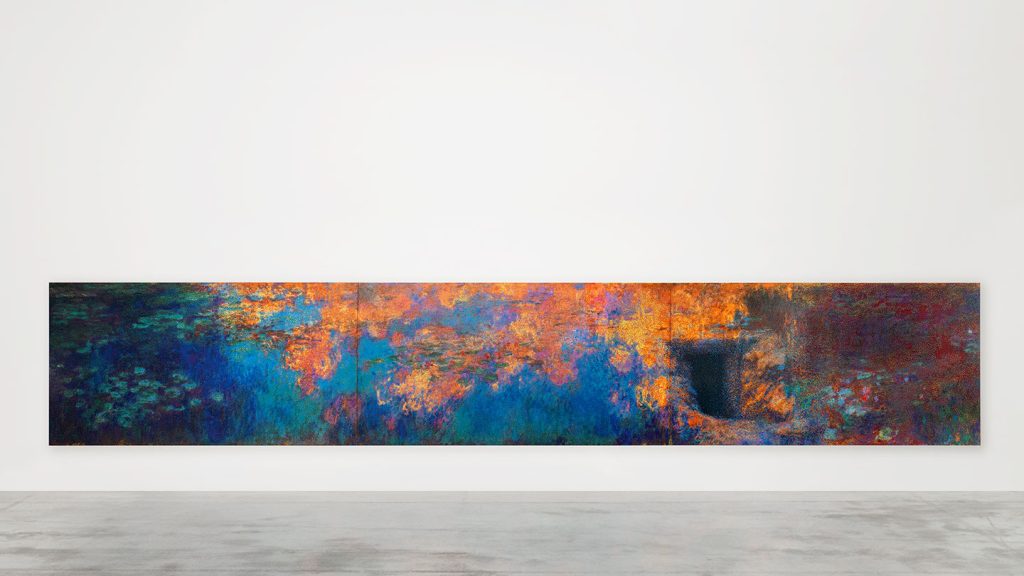
Water Lilies #1 recreates Monet’s famous painting, Water Lilies (1914 — 26), a monumental triptych which is currently in the collection of the Museum of Modern Art in New York. This vast new image by Ai Weiwei is seen in public for the very first time in the exhibition.
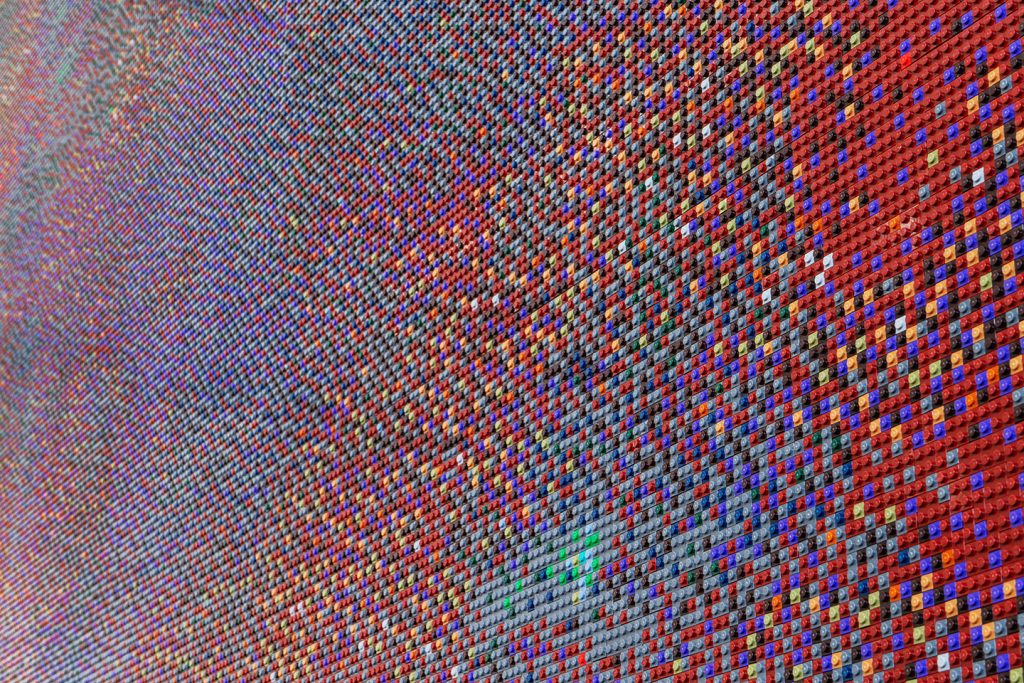
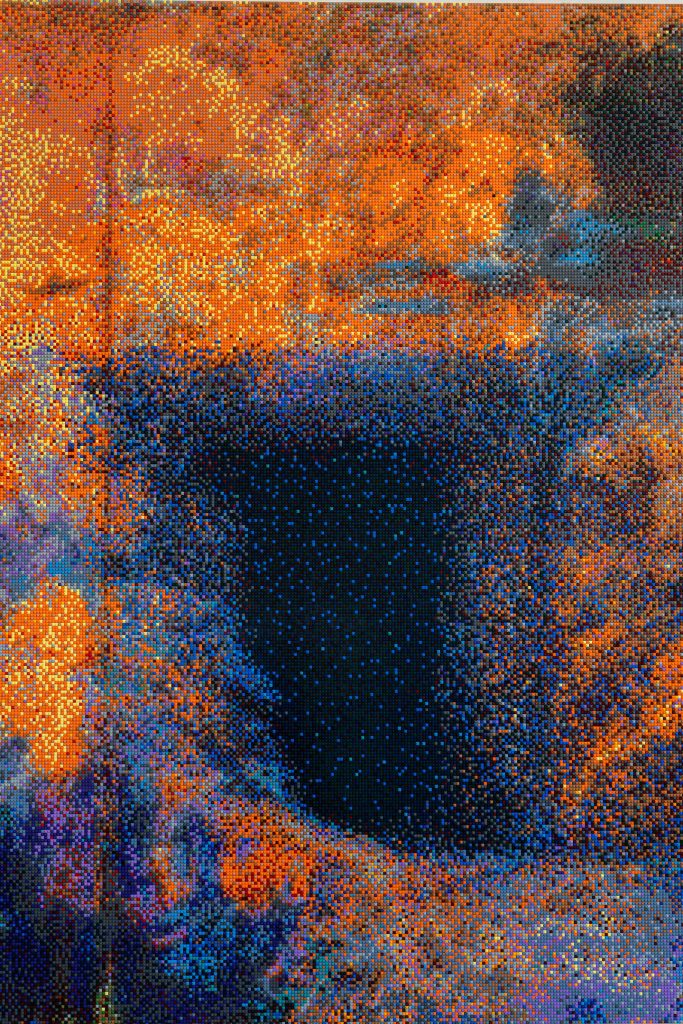
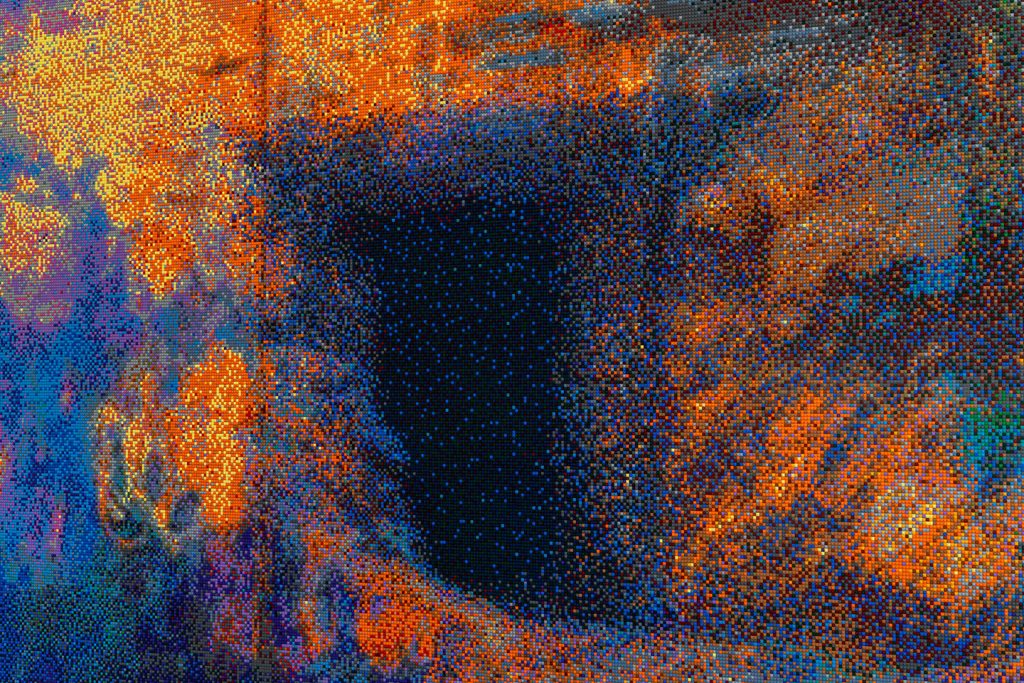
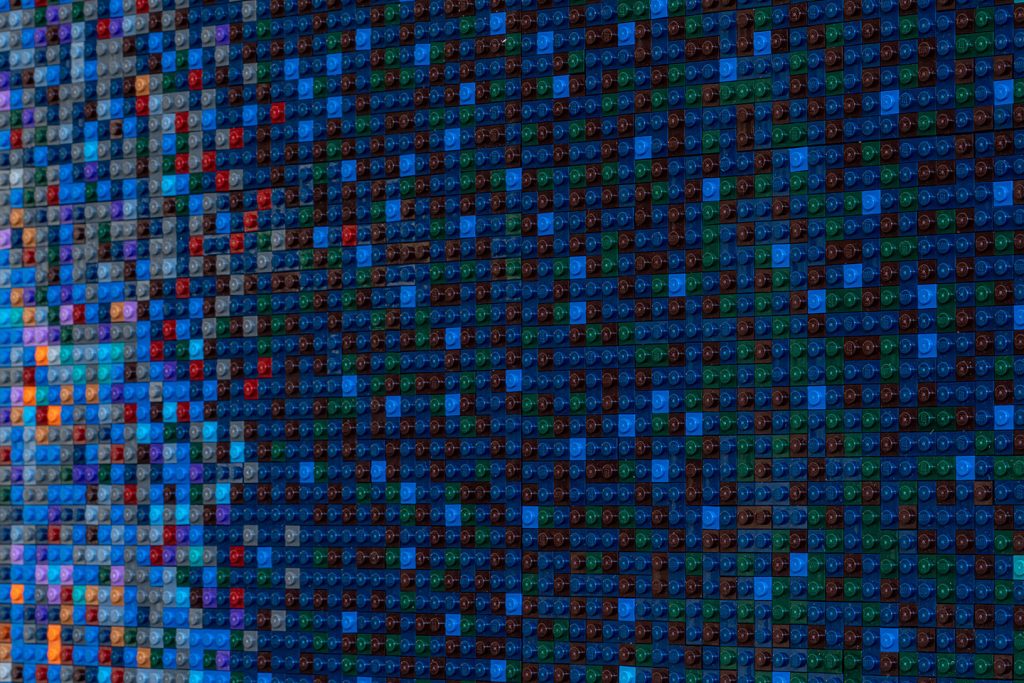
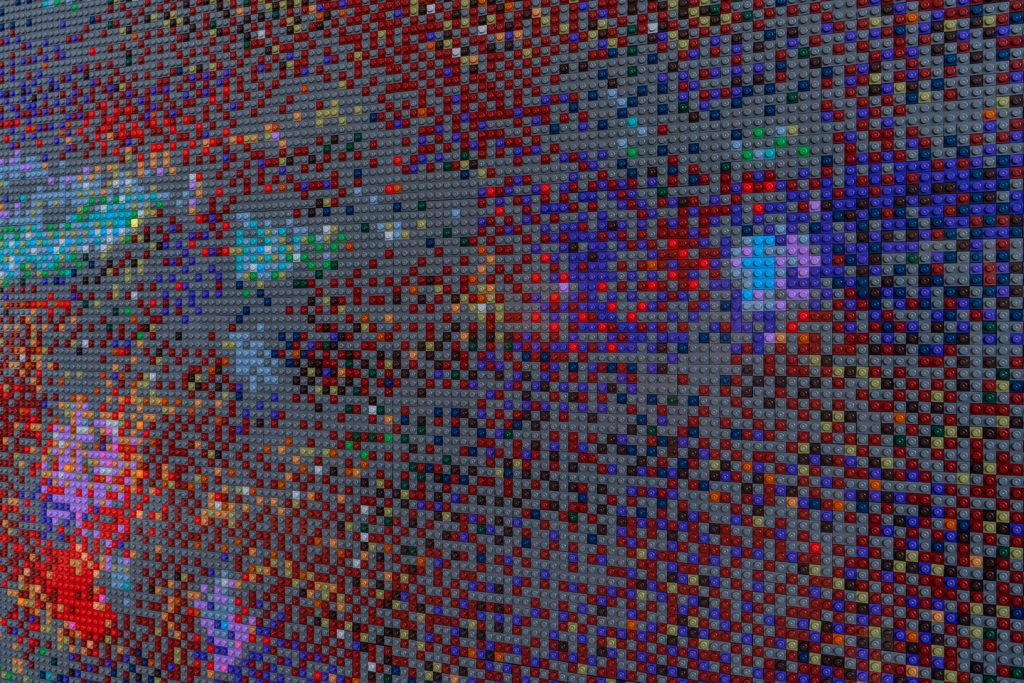
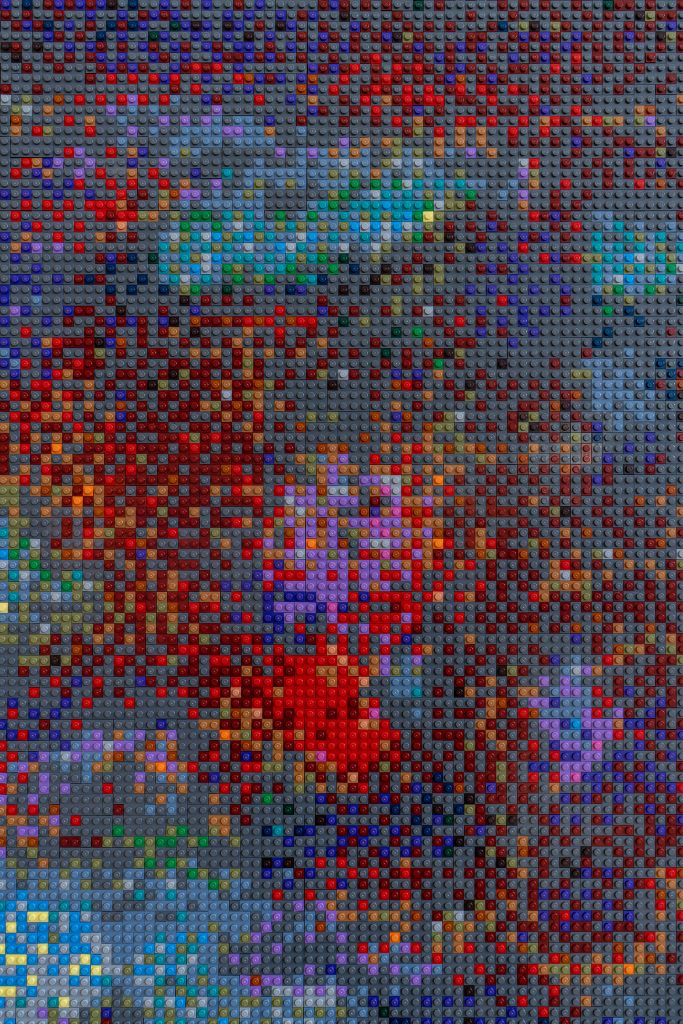
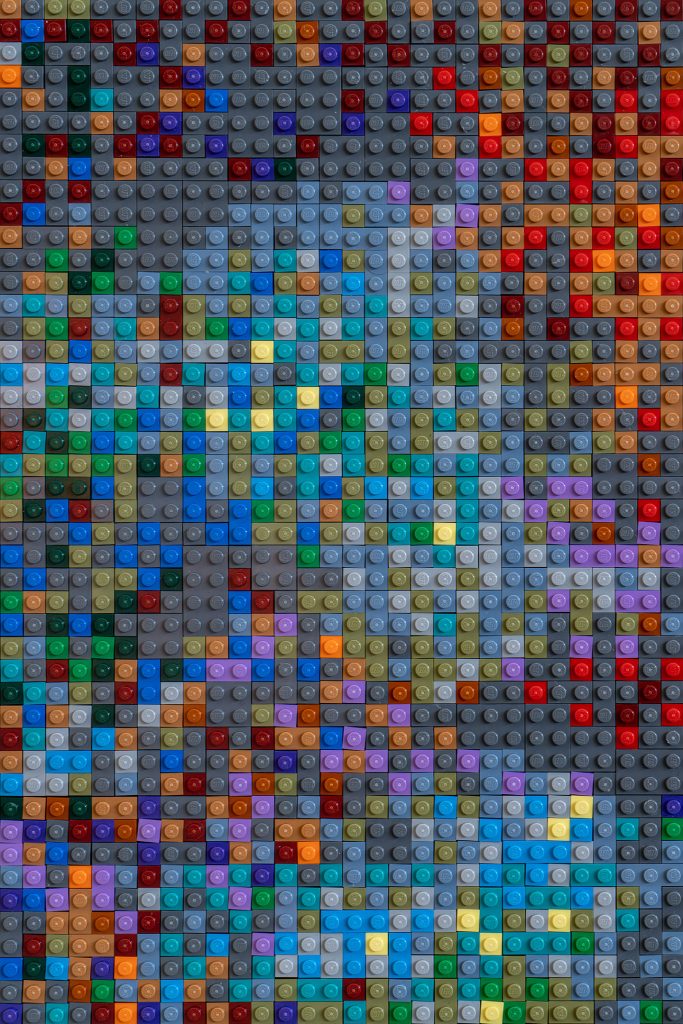
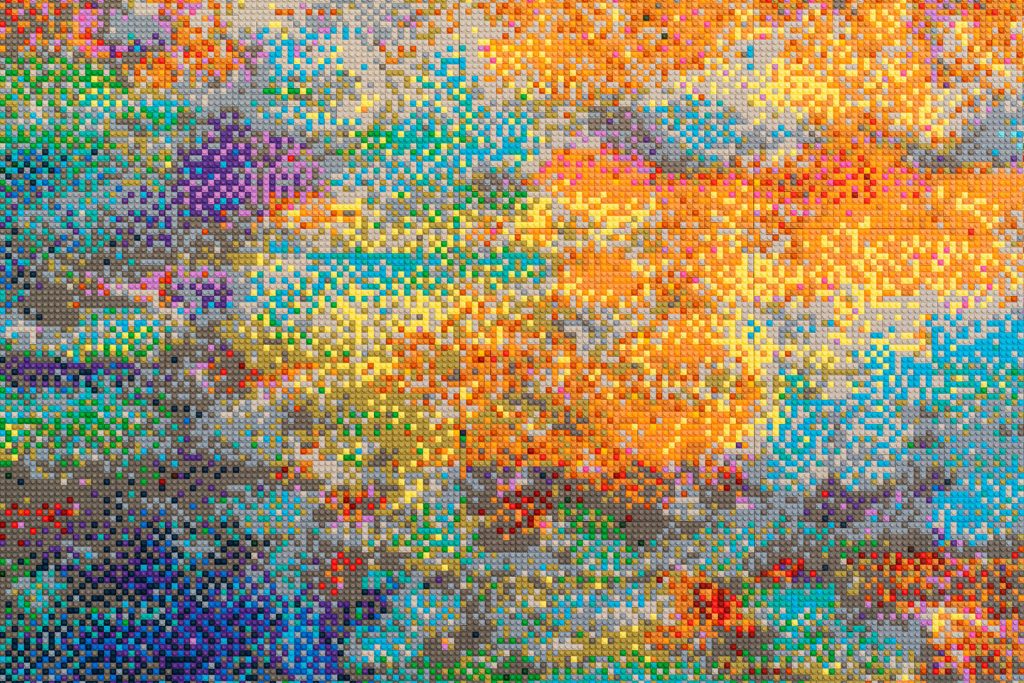
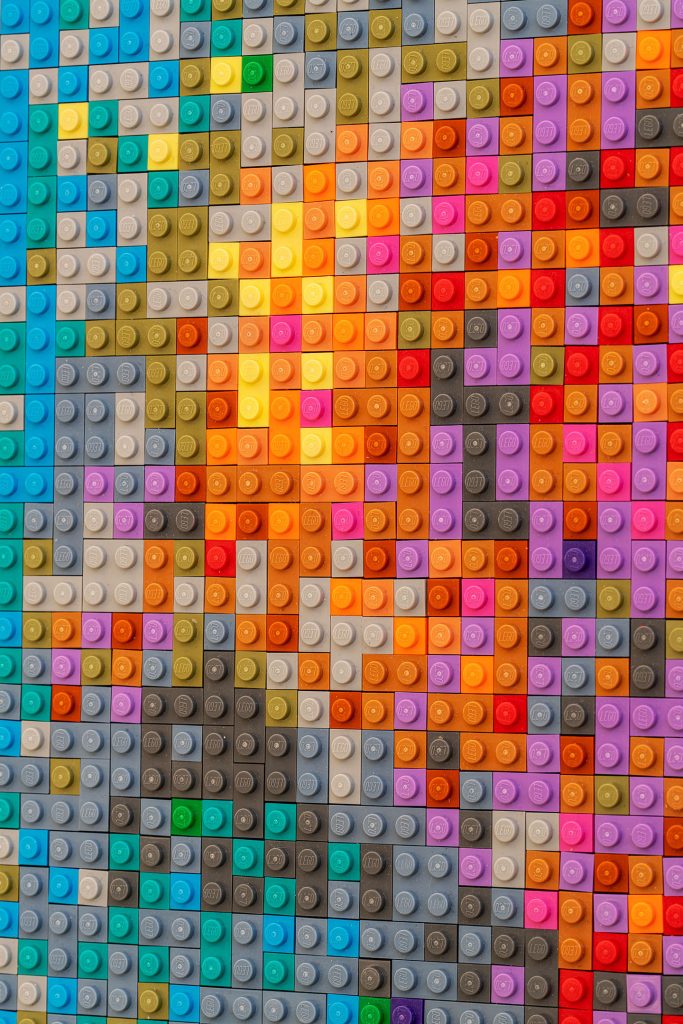
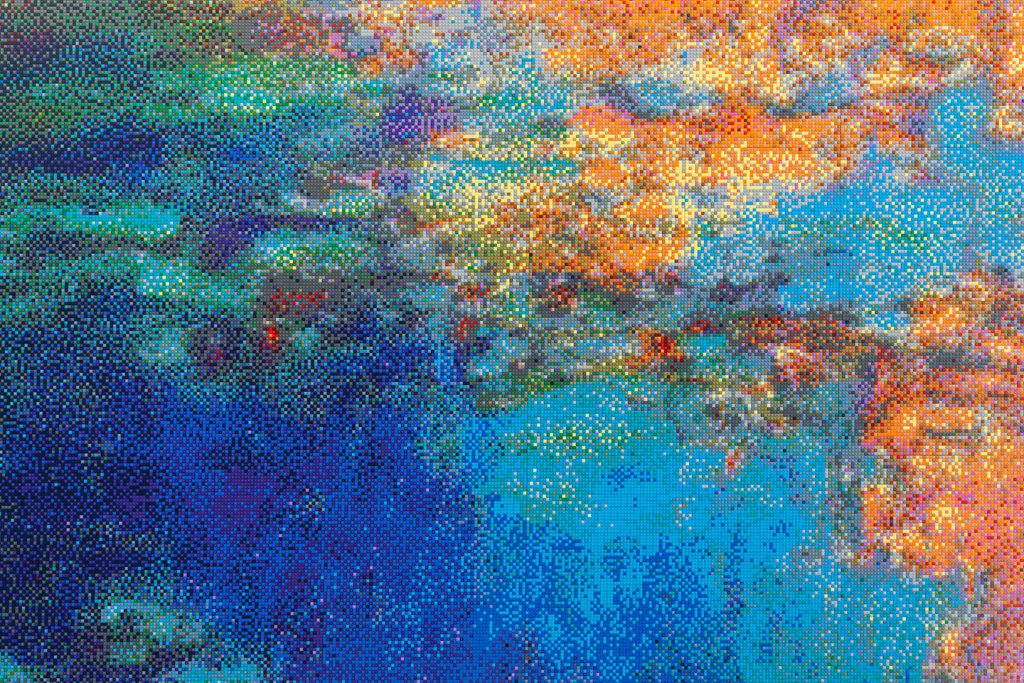
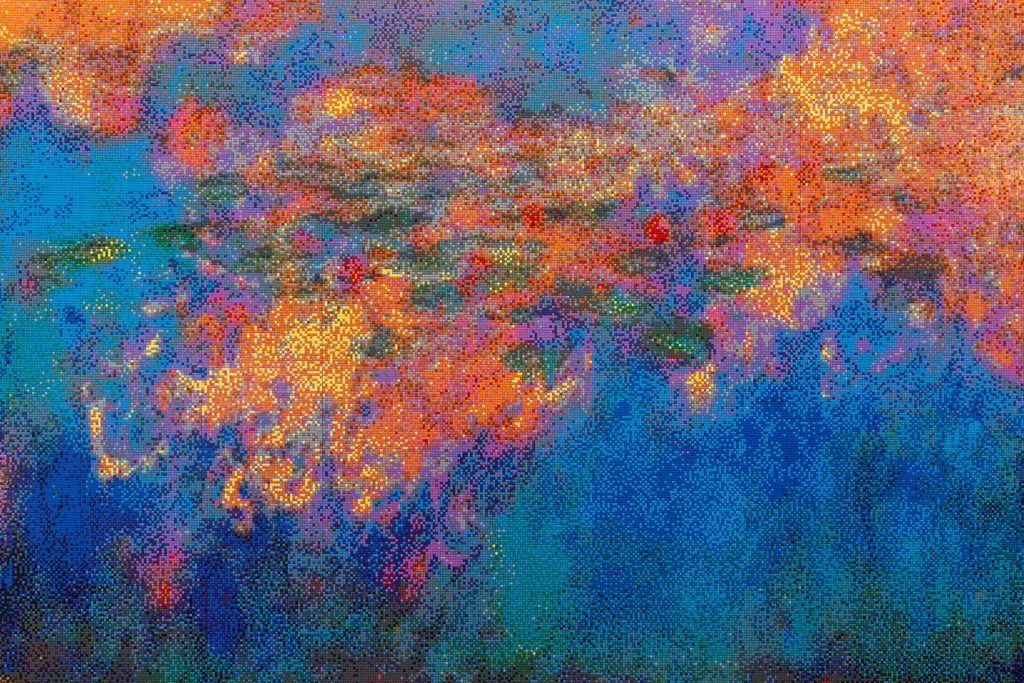
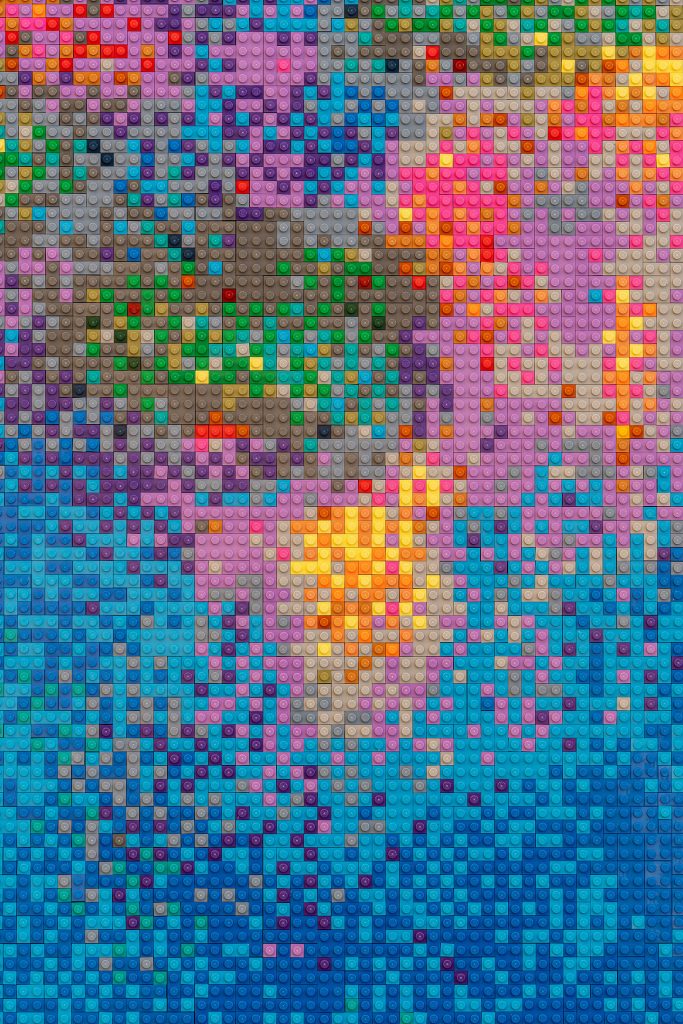
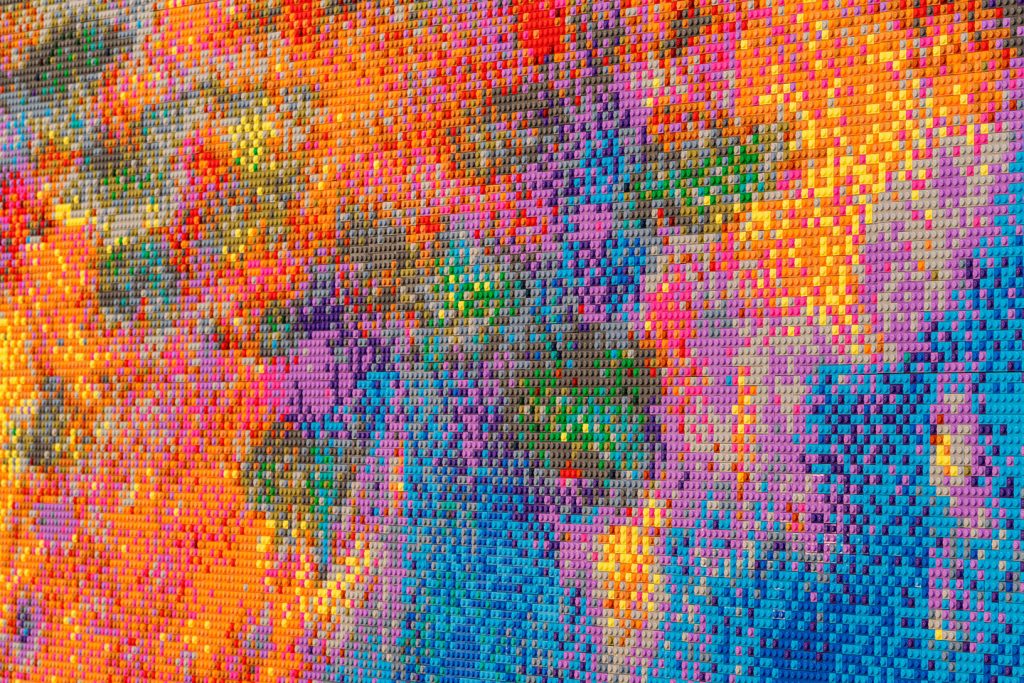
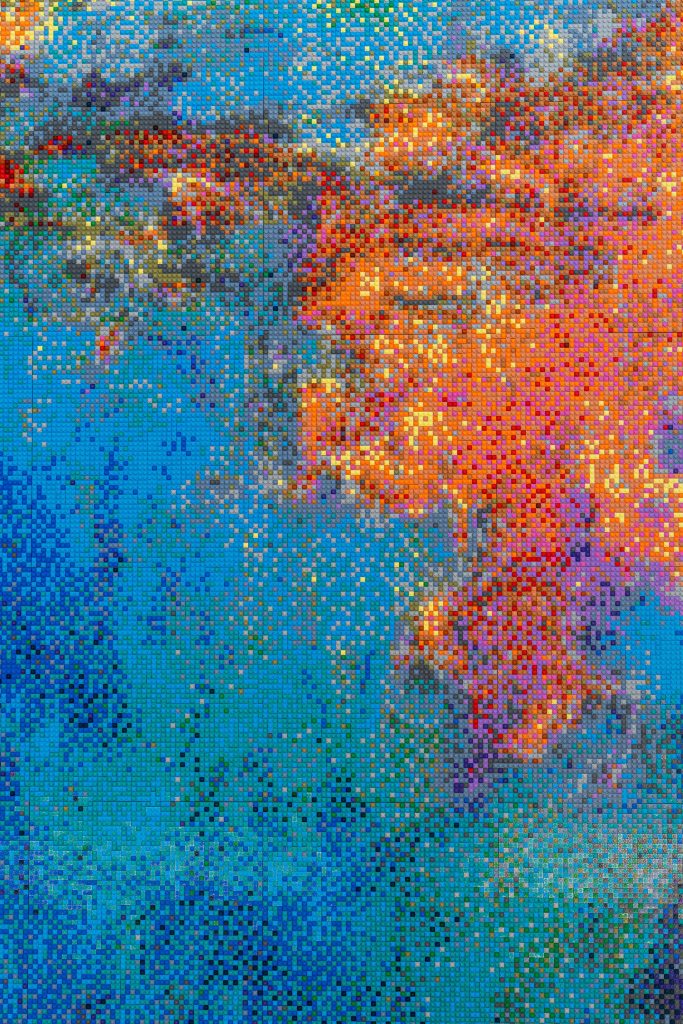
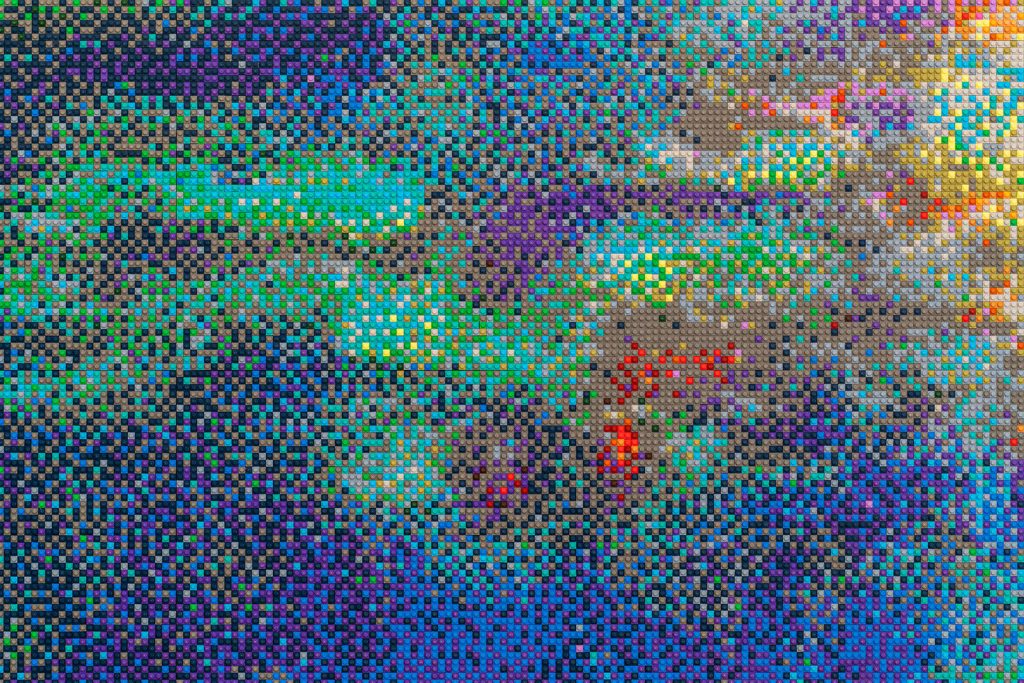
By recreating this famous scene, Ai Weiwei challenges our ideas of reality and beauty. The new image has been constructed out of Lego bricks to strip away Monet’s brushstrokes in favor of a depersonalized language of industrial parts and colors. These pixel-like blocks suggest contemporary digital technologies which are central to modern life, and in reference to how art is often disseminated in the contemporary world. Challenging viewers further, included on the right-hand side of Ai’s version is a dark portal, which is the door to the underground dugout in Xinjiang province where Ai and his father, Ai Qing, lived in forced exile in the 1960s. Their hellish desert home punctures the watery paradise.
A number of large-scale works are also installed outside of the exhibition gallery so that all visitors to the Design Museum are able to experience Ai Weiwei’s work. The most striking is Coloured House, the timber frame of a house that once belonged to a prosperous family in Zhejiang province, in eastern China, during the early Qing dynasty (1644 – 1911 CE). It has been installed in the Design Museum’s atrium where visitors can walk within it. Ai Weiwei has painted the house with industrial colors, combining ancient and modern, and has installed it on crystal bases – giving presence and status to this unlikely survivor. This is the first time Coloured House has been seen in the UK.
Ai Weiwei said, “This is an exhibition focusing on a very specific concept: design. I had to think about how we use the space in the Design Museum as a whole, and the exhibition offers a rich experience of what design is, and how design relates to our past and to our current situation.”
To coincide with the exhibition, Avant Arte, the curated marketplace that makes discovering and owning art radically more accessible, is collaborating with Ai Weiwei to make his work available to all in support of the Design Museum. The partnership encompasses Middle Finger, a new interactive online work by Ai Weiwei and a series of limited editions.
Middle Finger invites people to submit their own perspective on power by ‘flipping the bird’ to a location of their choice, recalling Ai’s seminal work, Study of Perspective. Since launching 16 March 2023, the work has received over 15,000 global submissions and will remain open for all to take part for the duration of Ai Weiwei: Making Sense. The money raised from this partnership will go towards supporting the Design Museum’s future work, helping it to carry out its mission to champion design and designers, and to make the impact of design visible to all.
Tim Marlow, Director and CEO of the Design Museum, said, “Ai Weiwei is one of the most compelling artists and activists working today, but his practice is profoundly pluralistic, encompassing film, architecture, design, and collecting. This exhibition is, therefore, long overdue and I’m proud that the Design Museum is the first institution to frame the work of Ai Weiwei through the lens of architecture and design and to collaborate in new ways with one of the great creative forces of the 21st century to date.”
Ai Weiwei: Making Sense runs at the Design Museum from April 07 to July 30.

